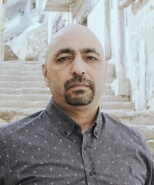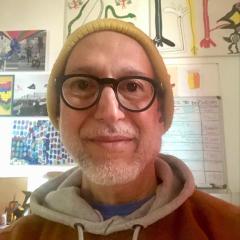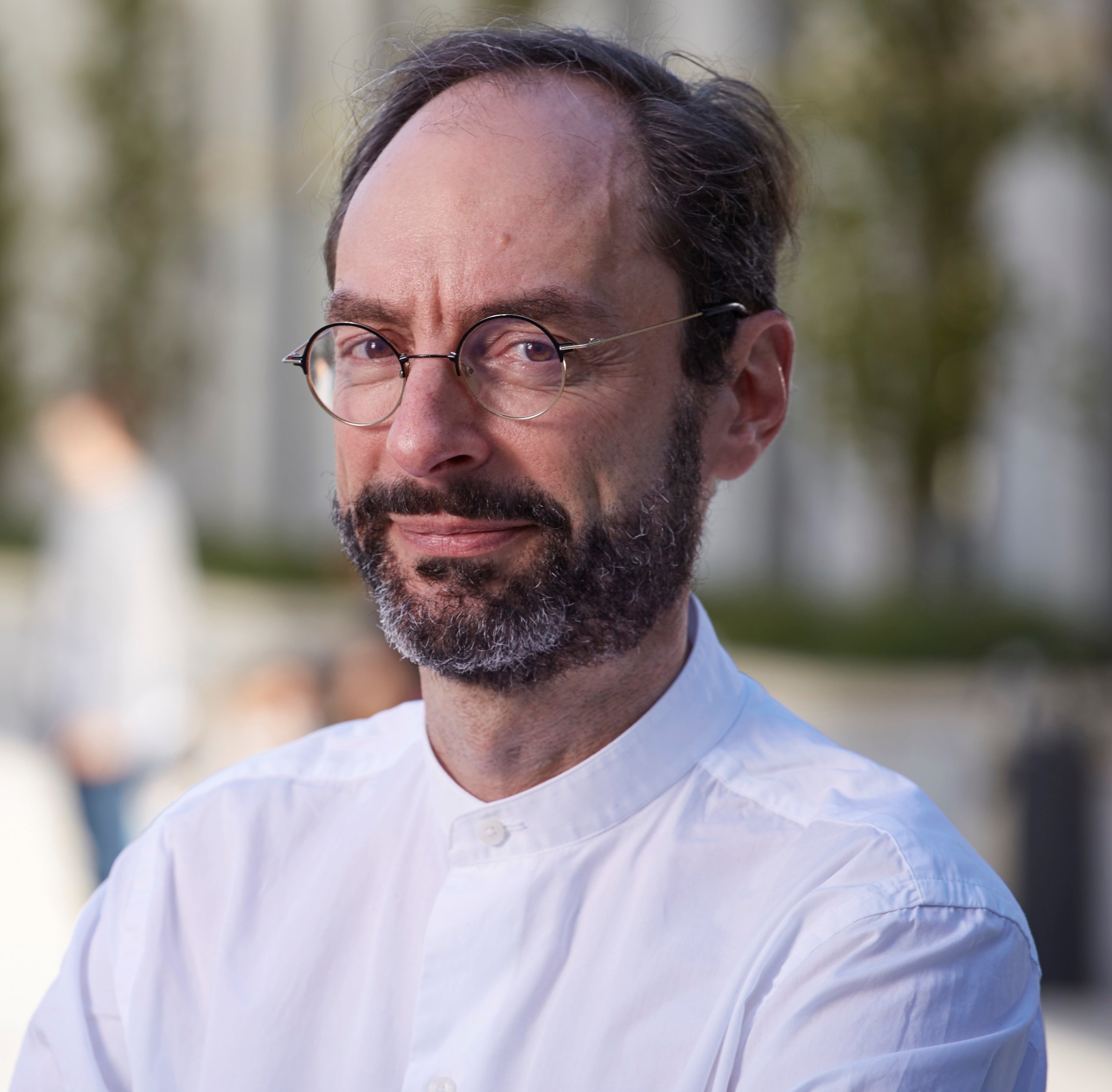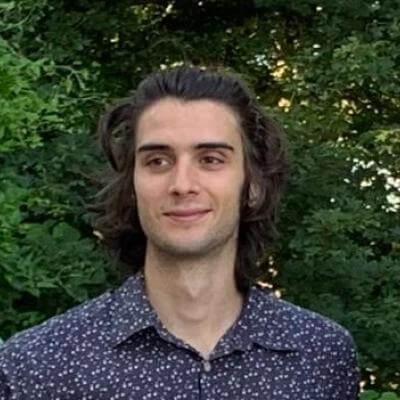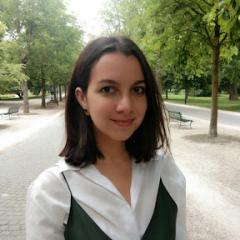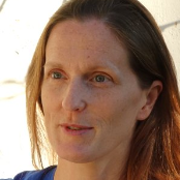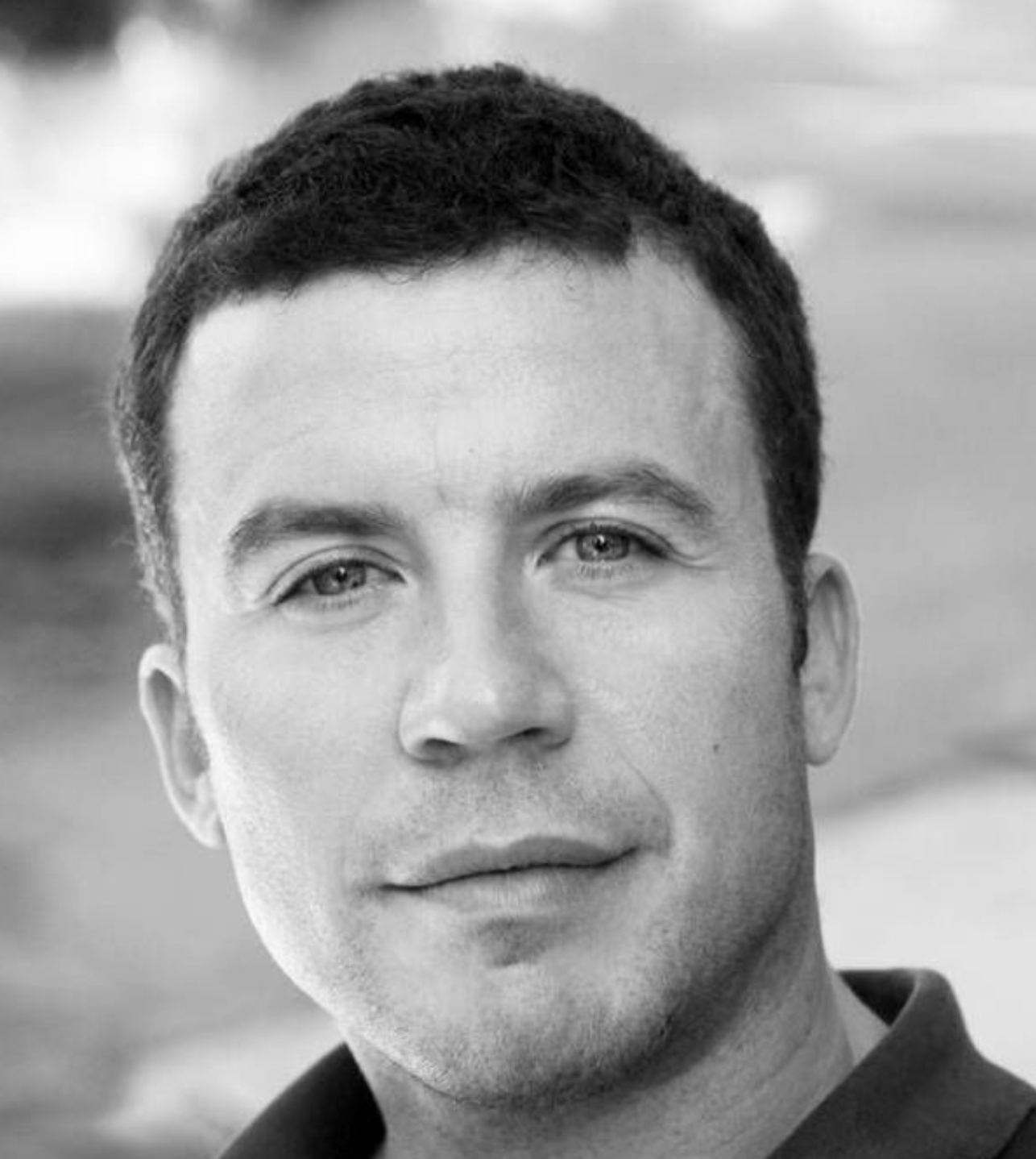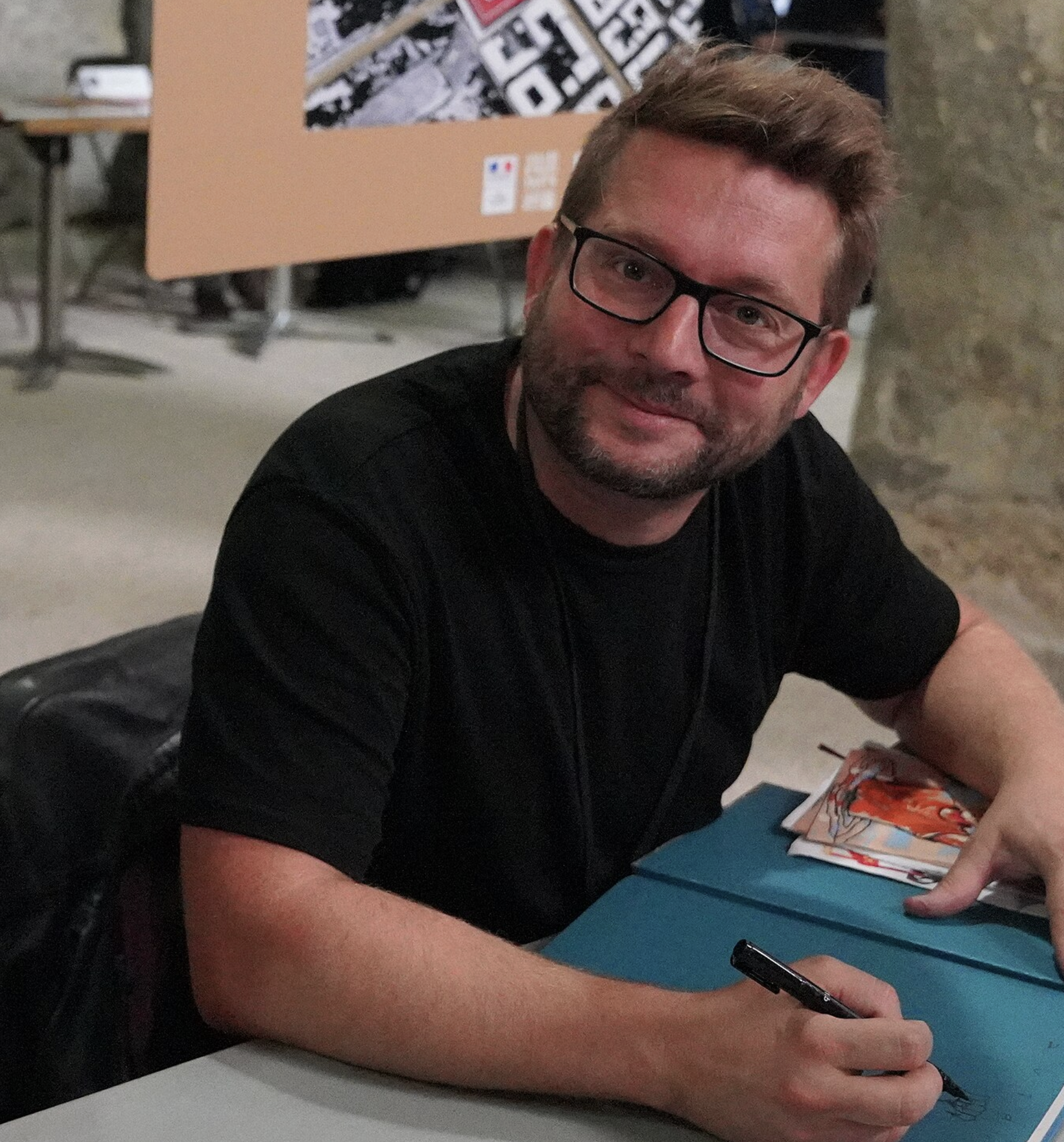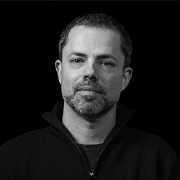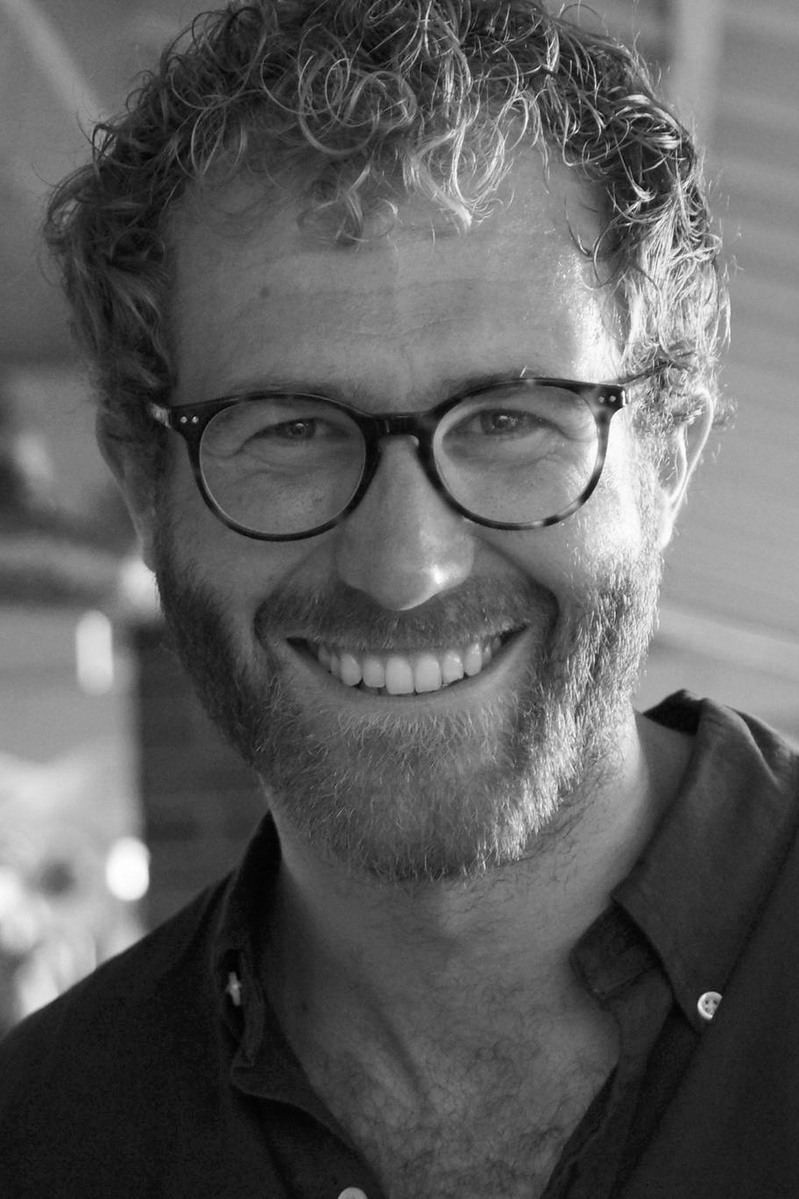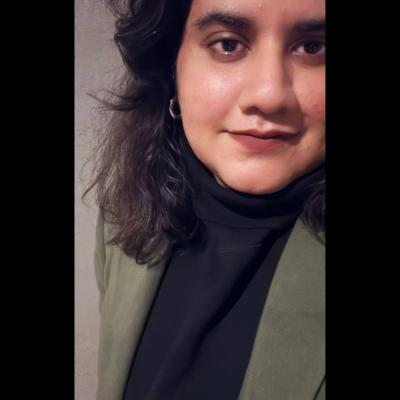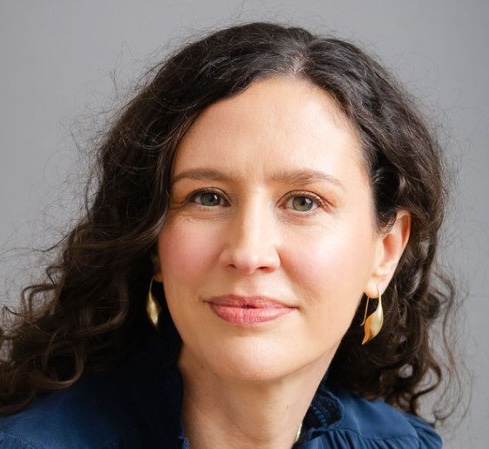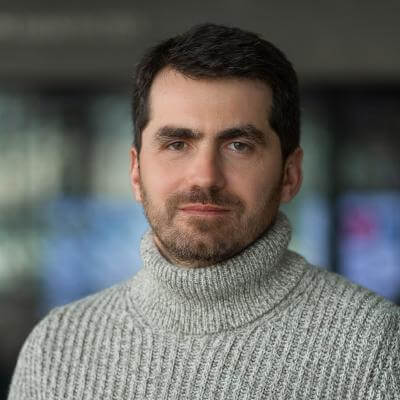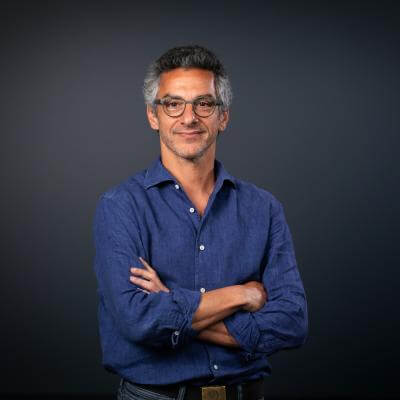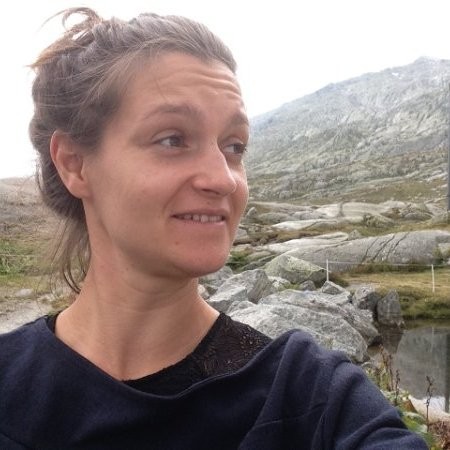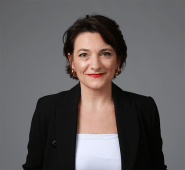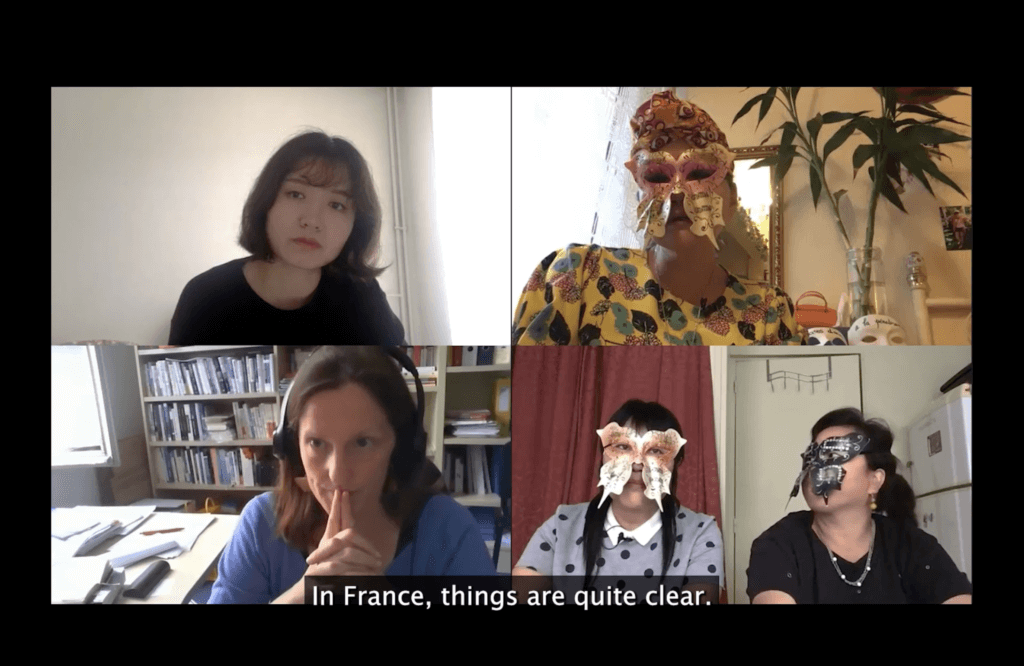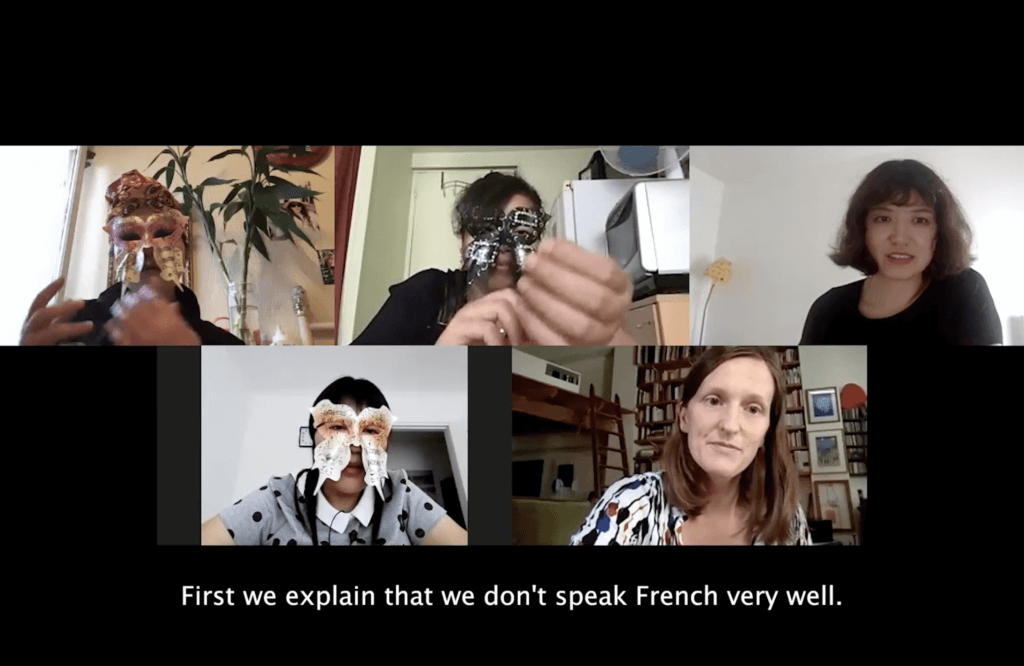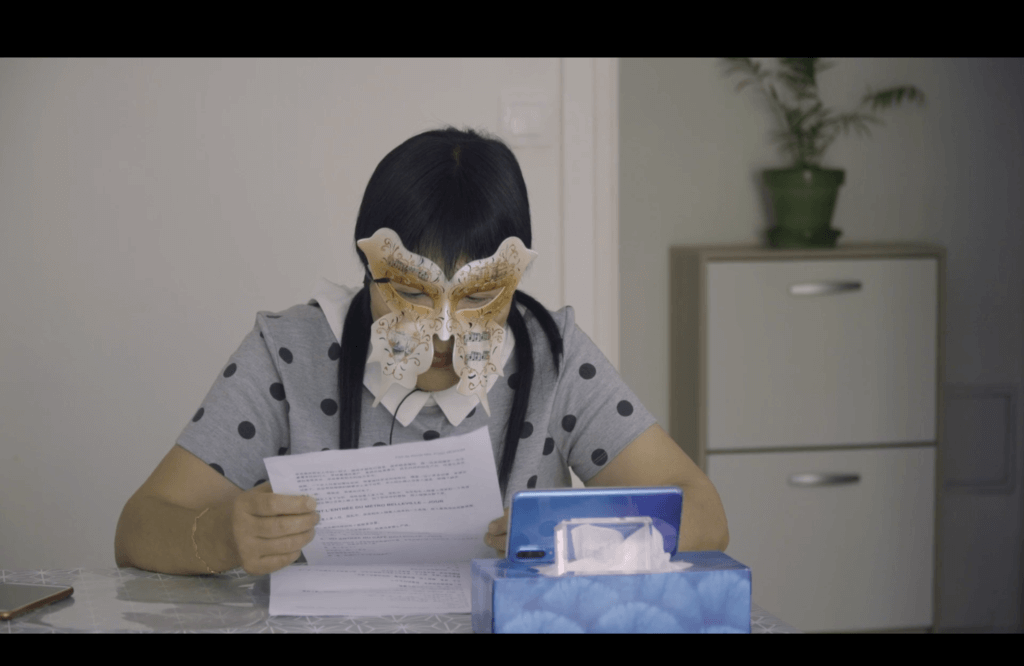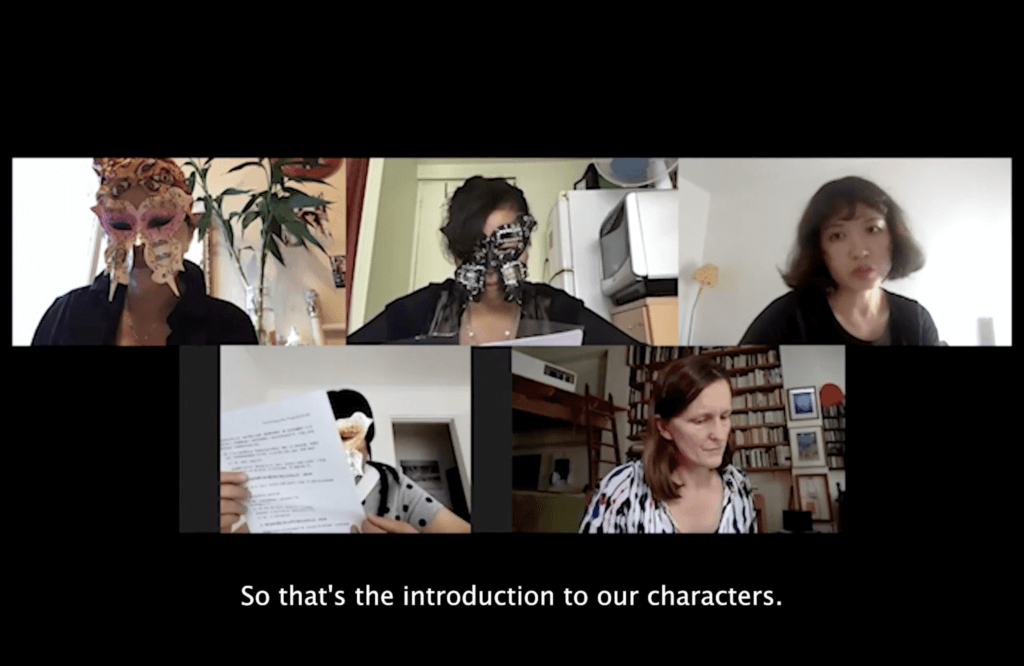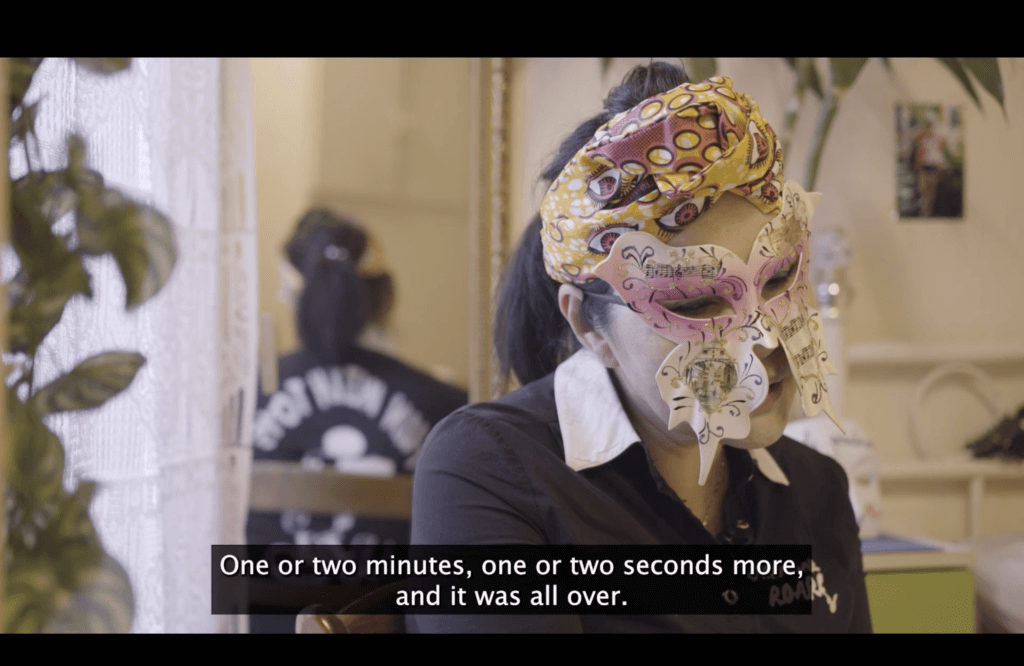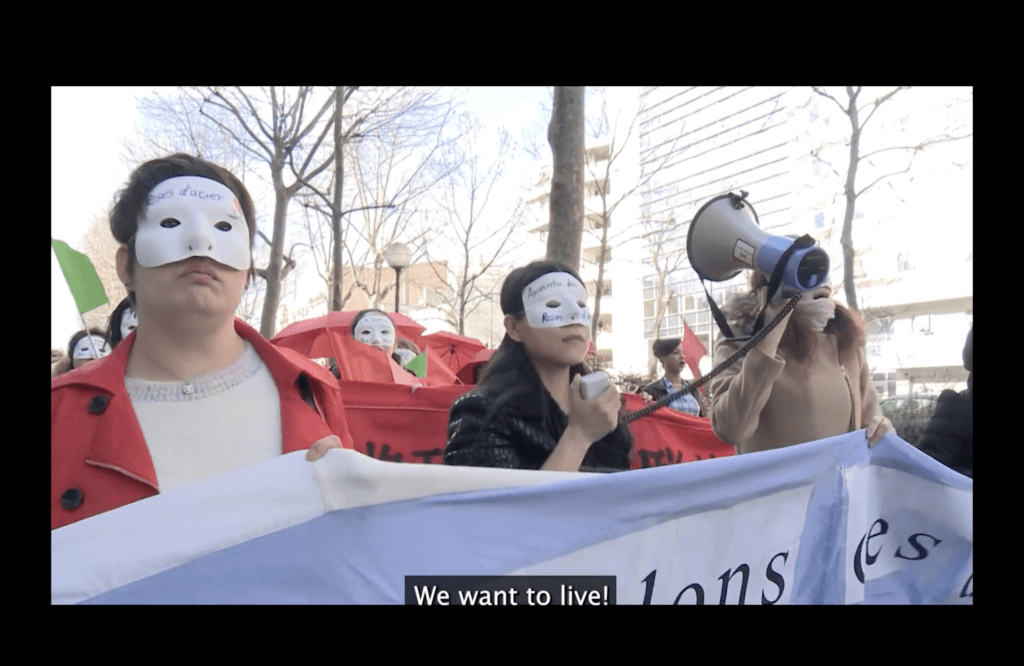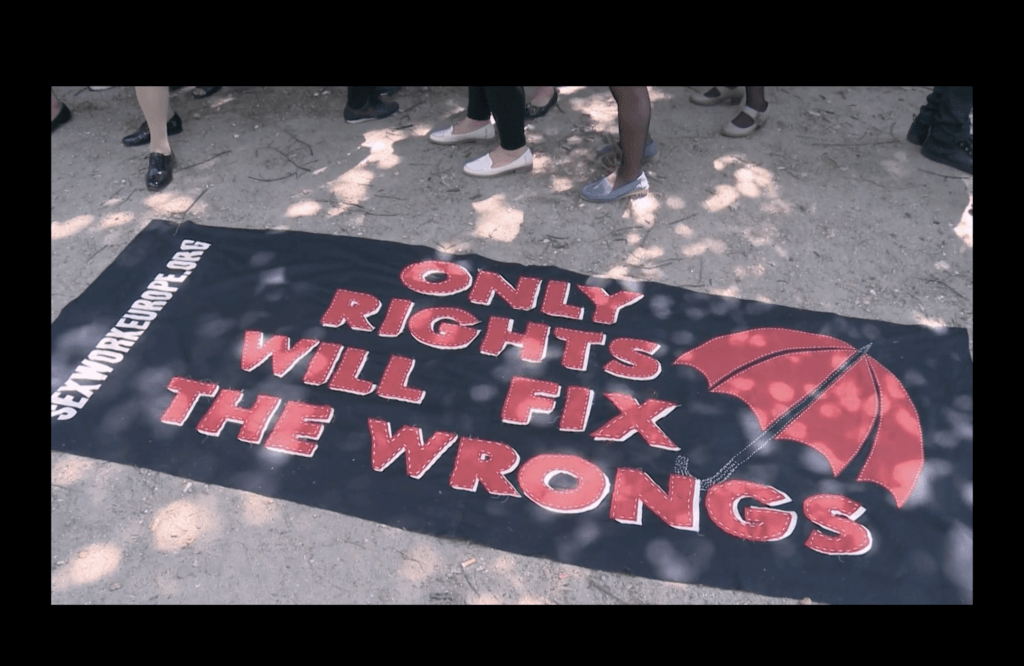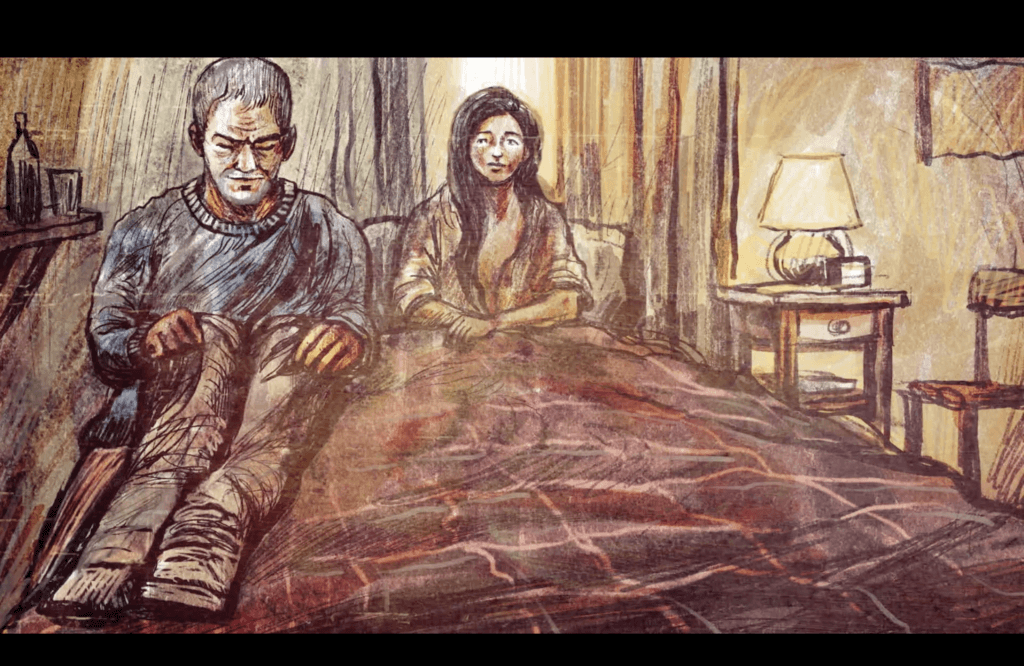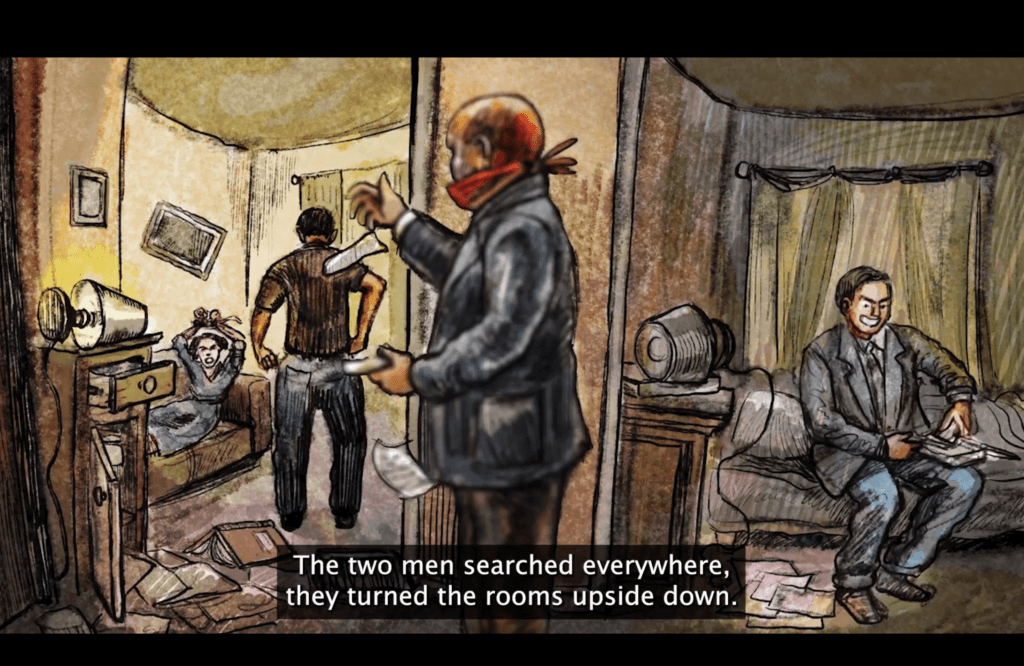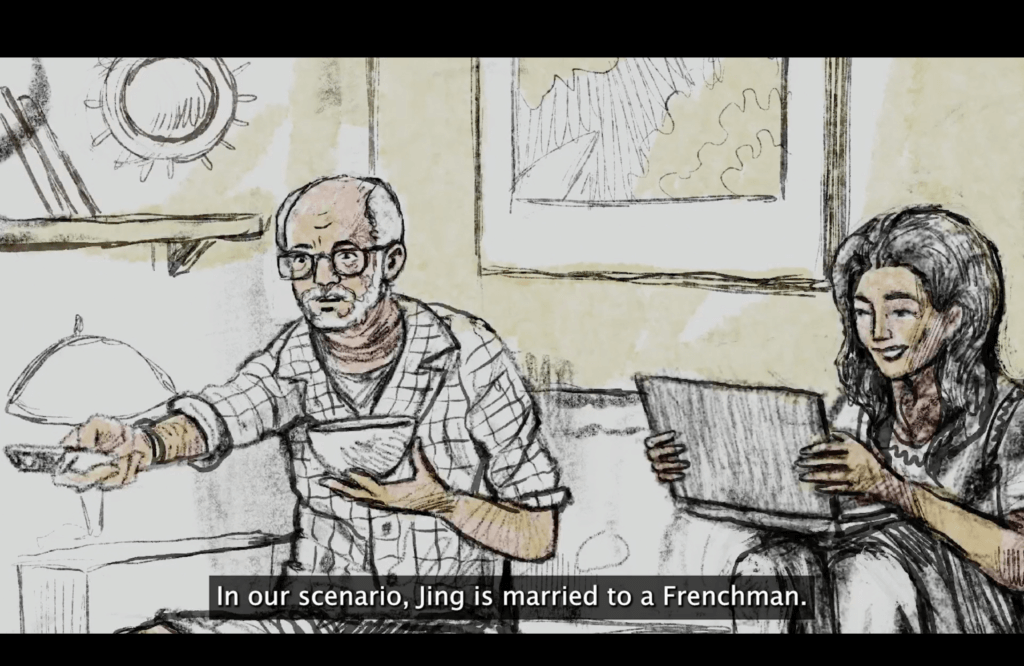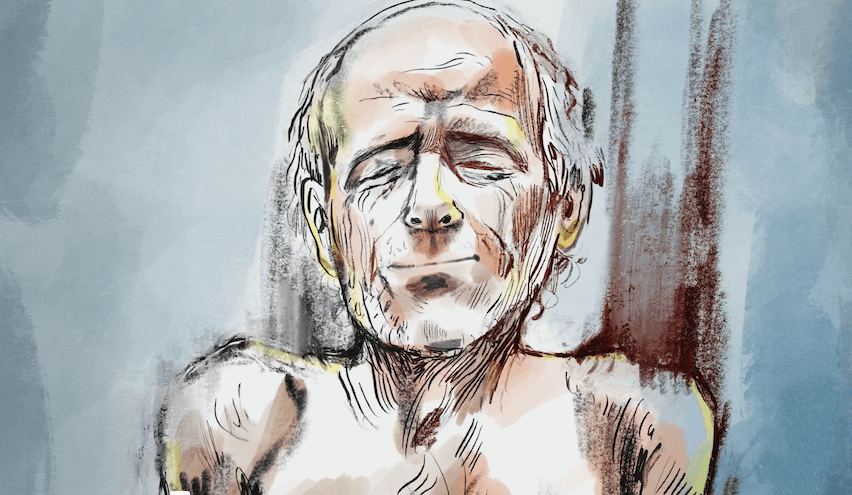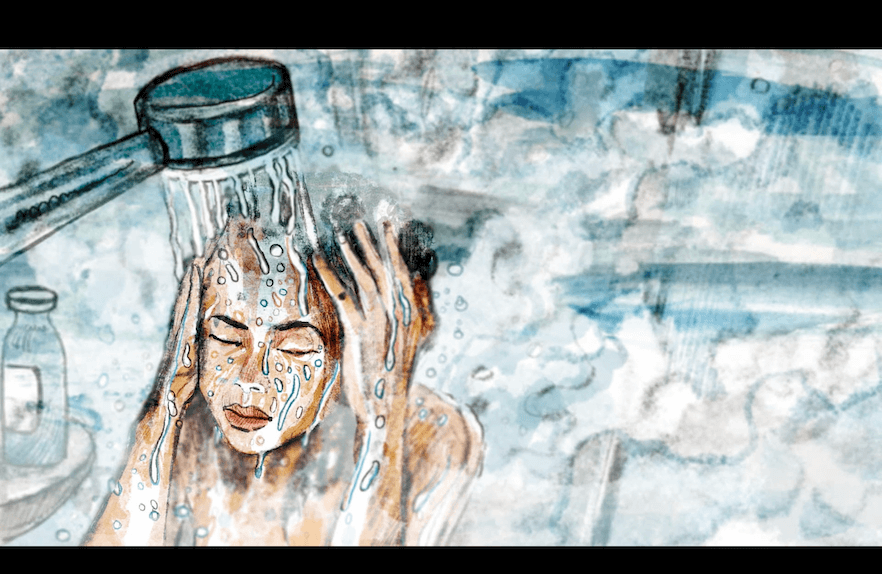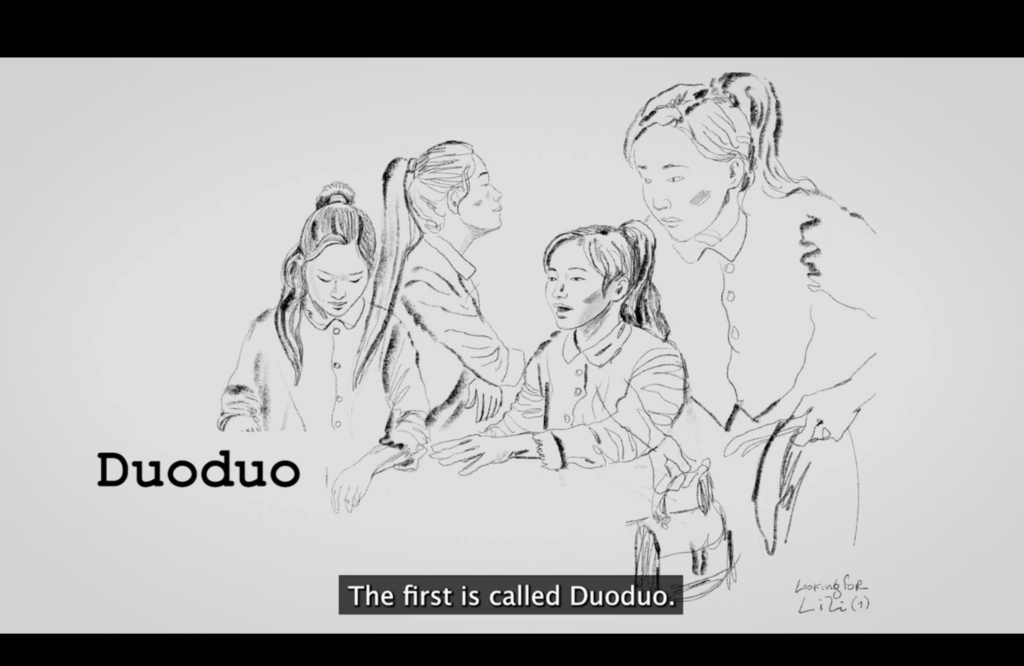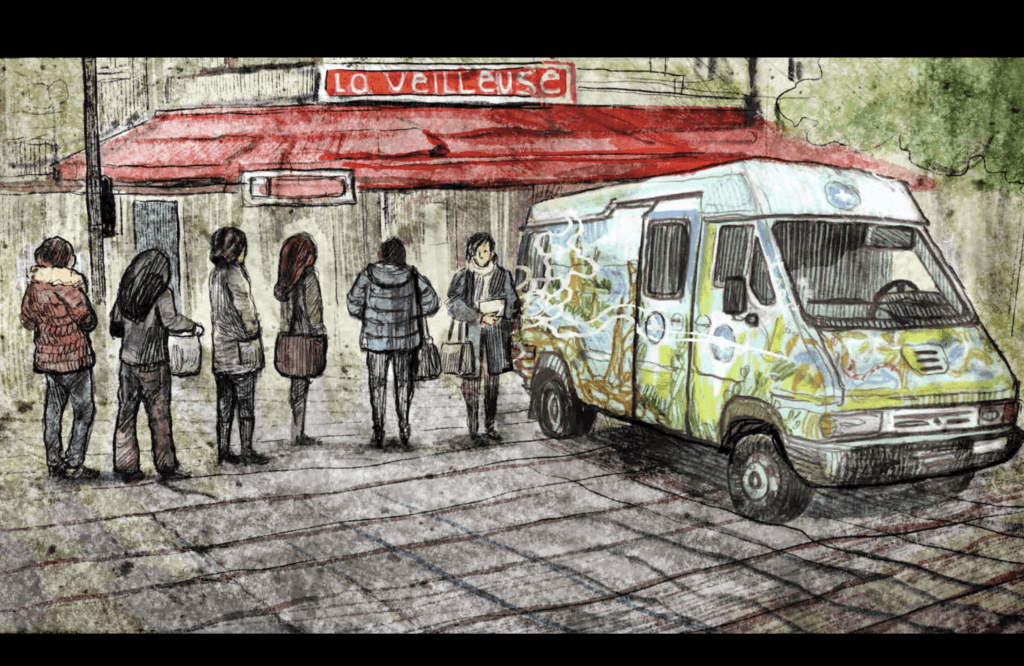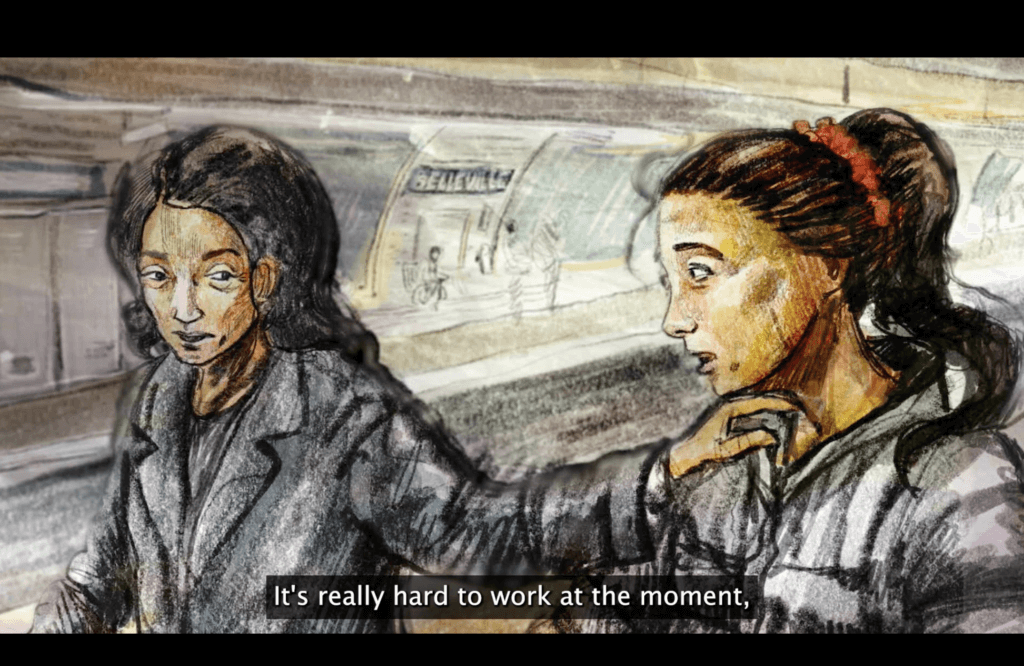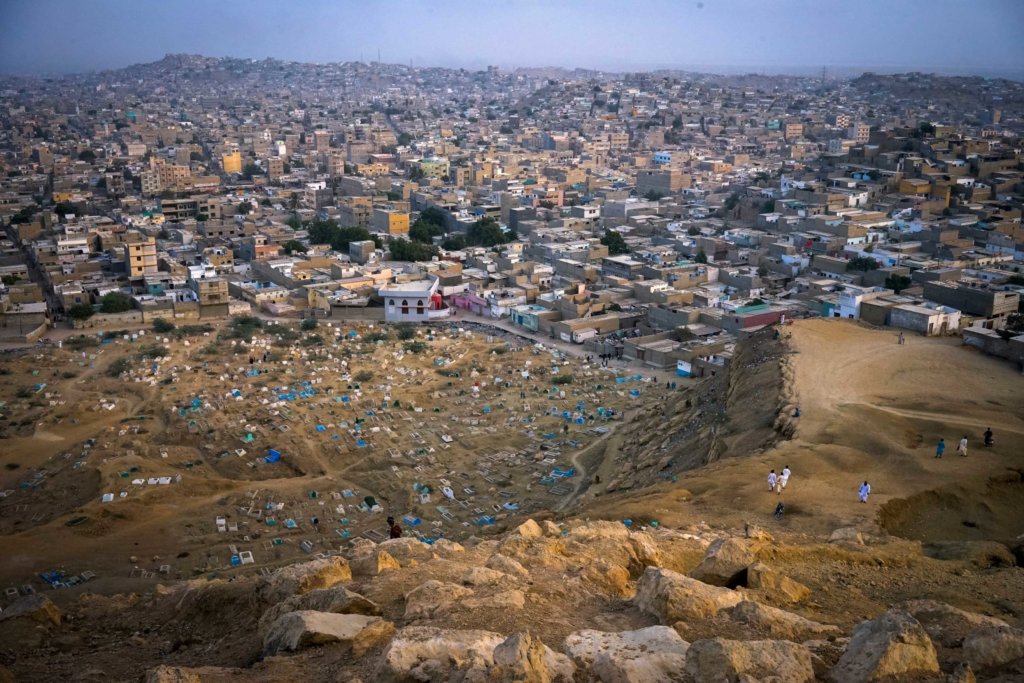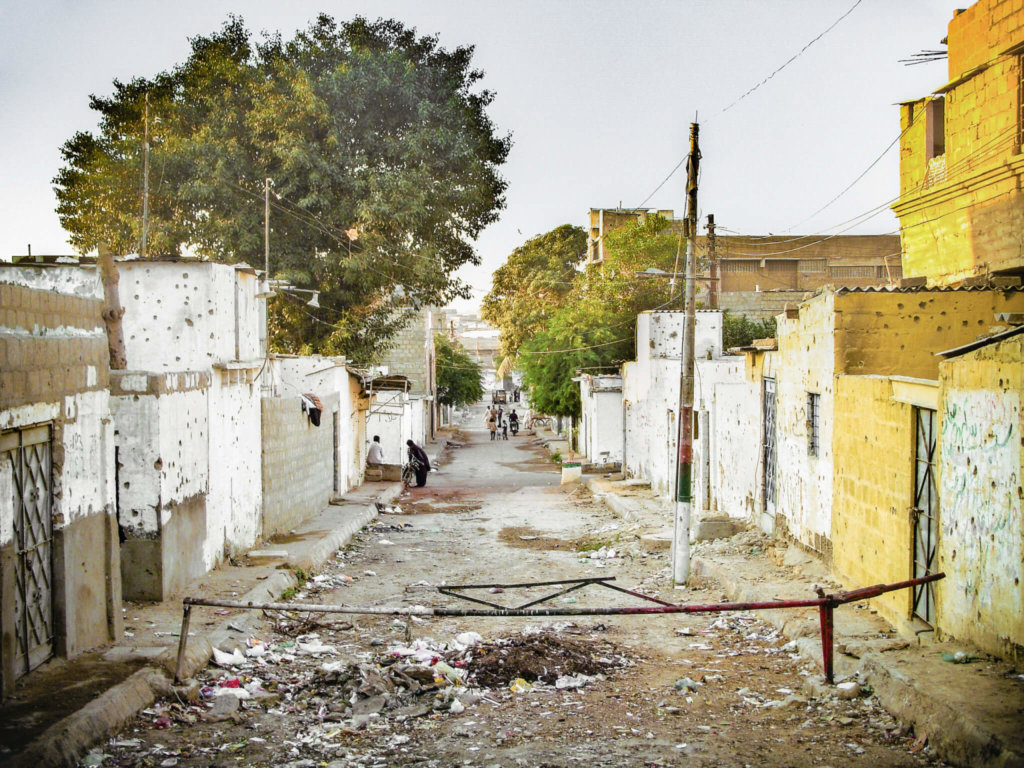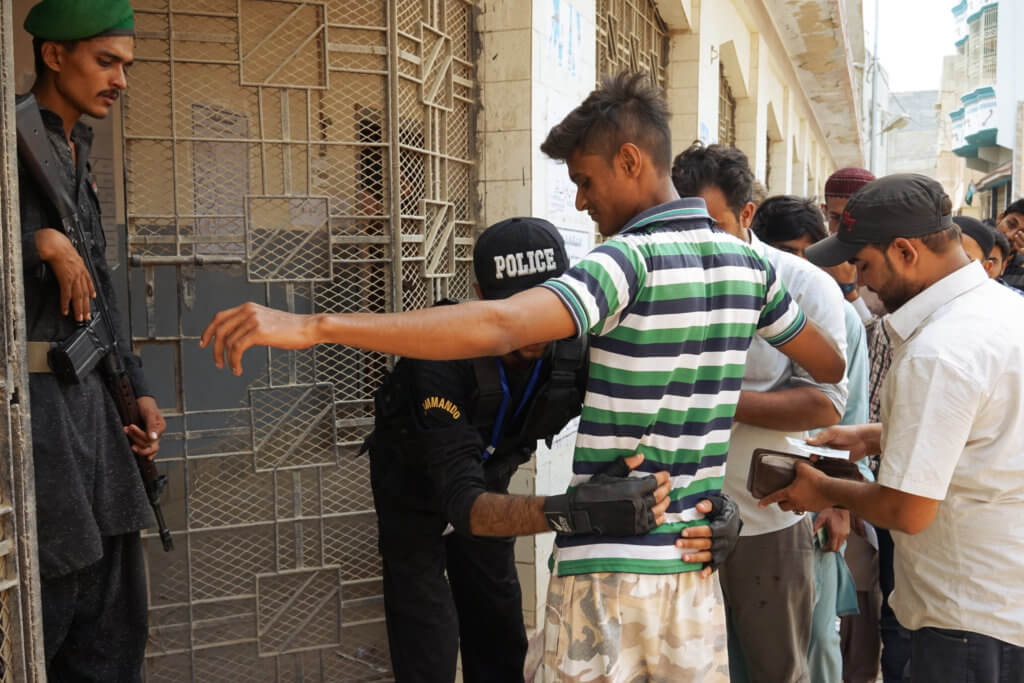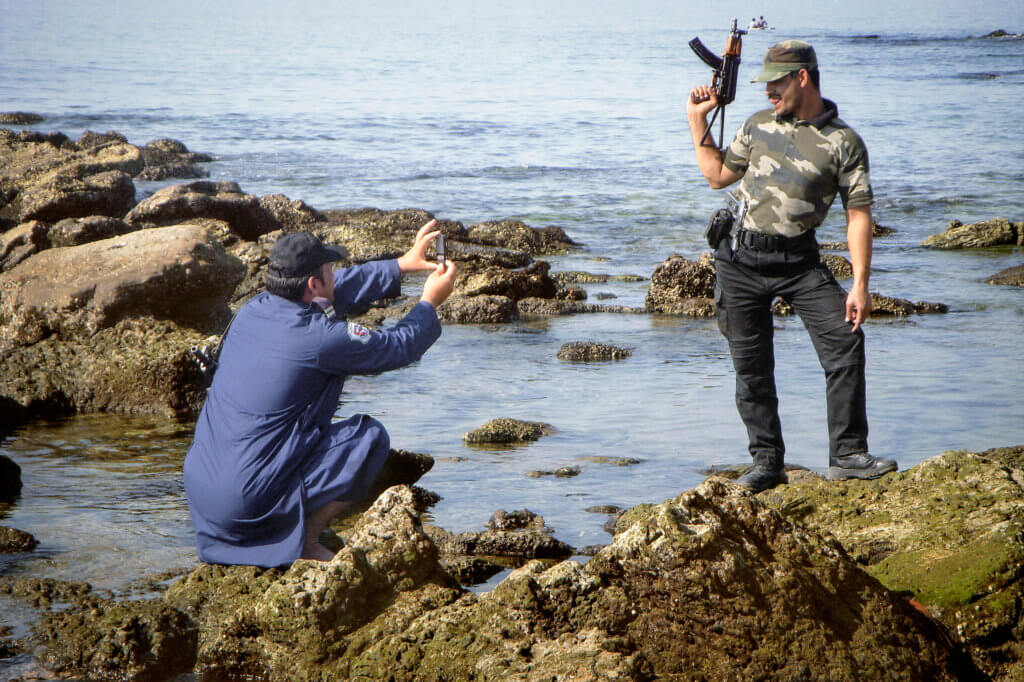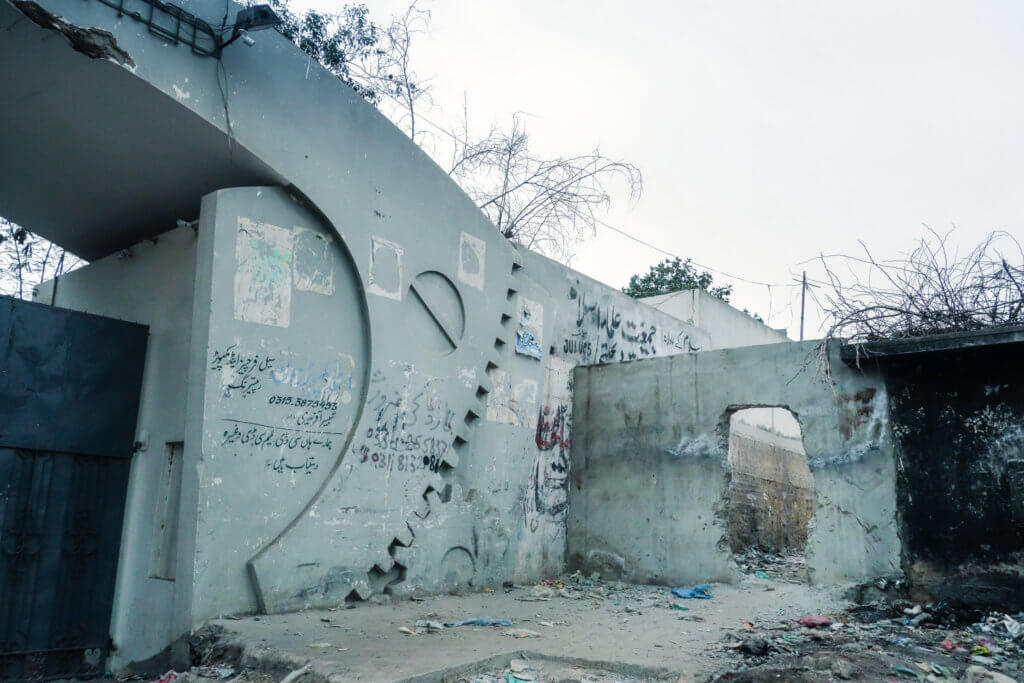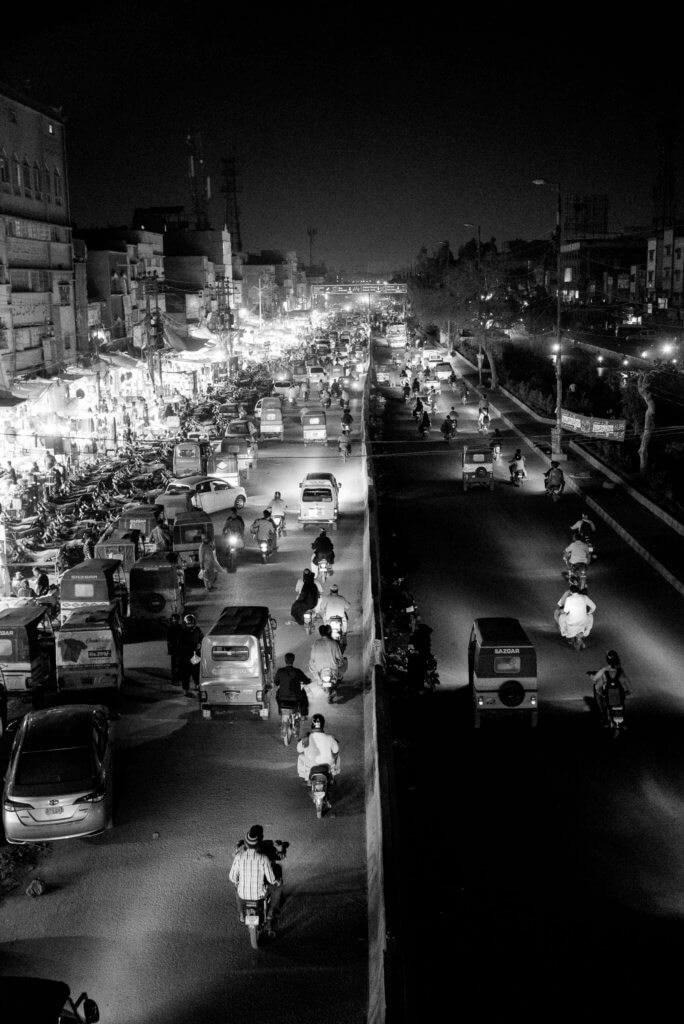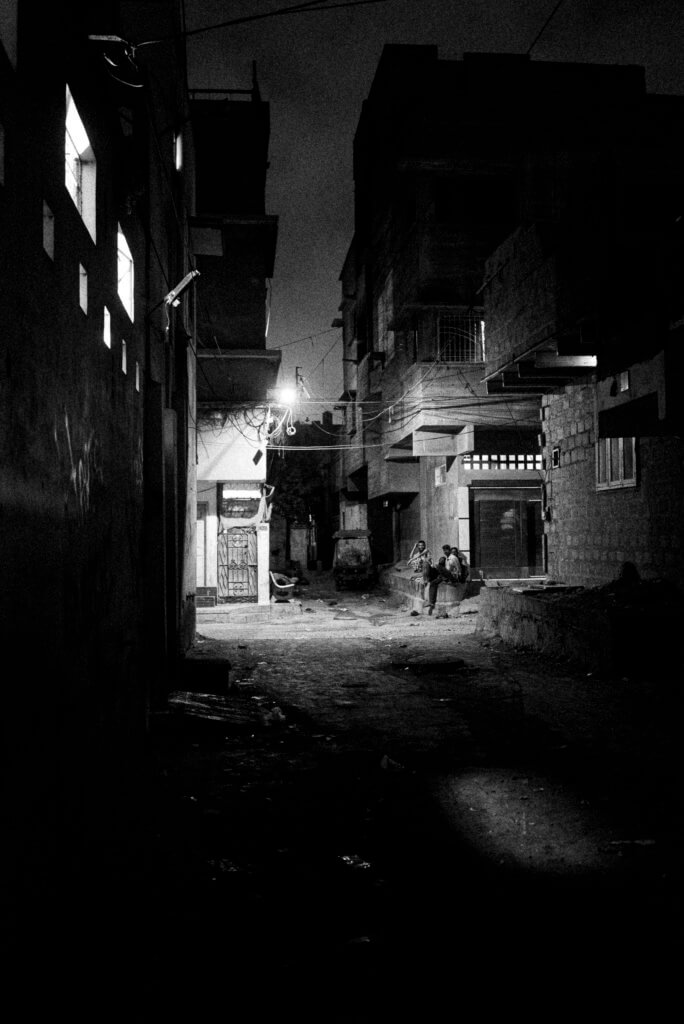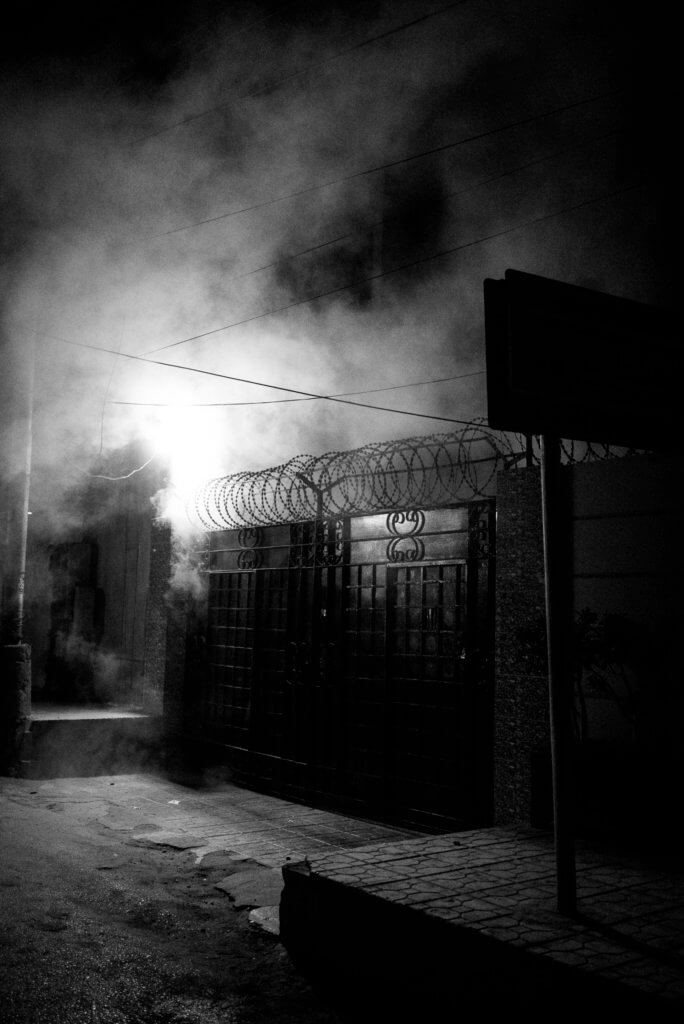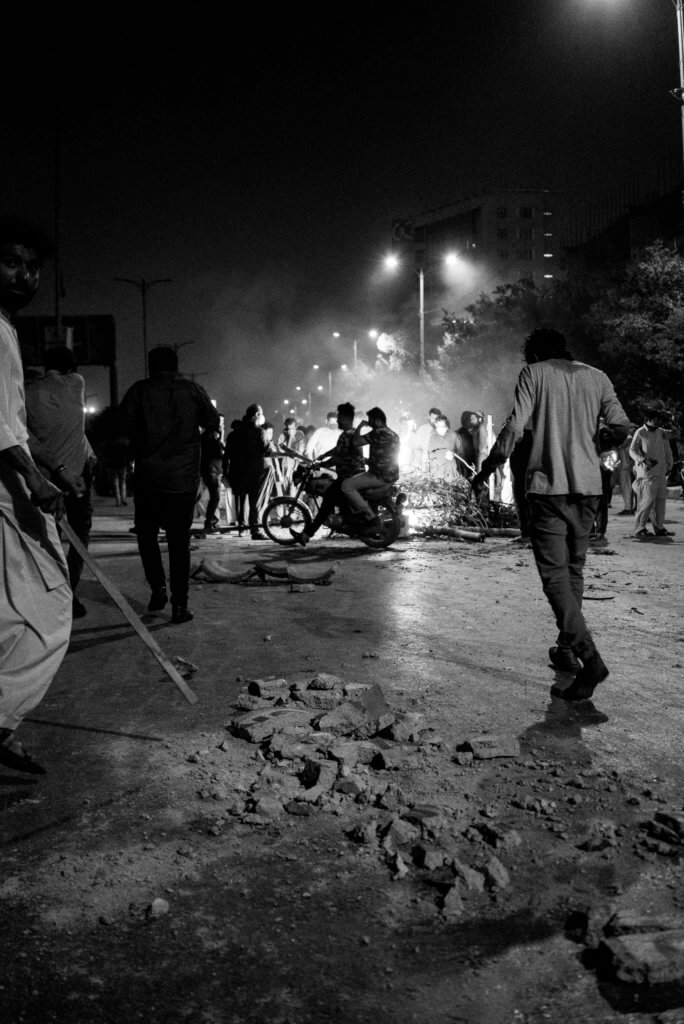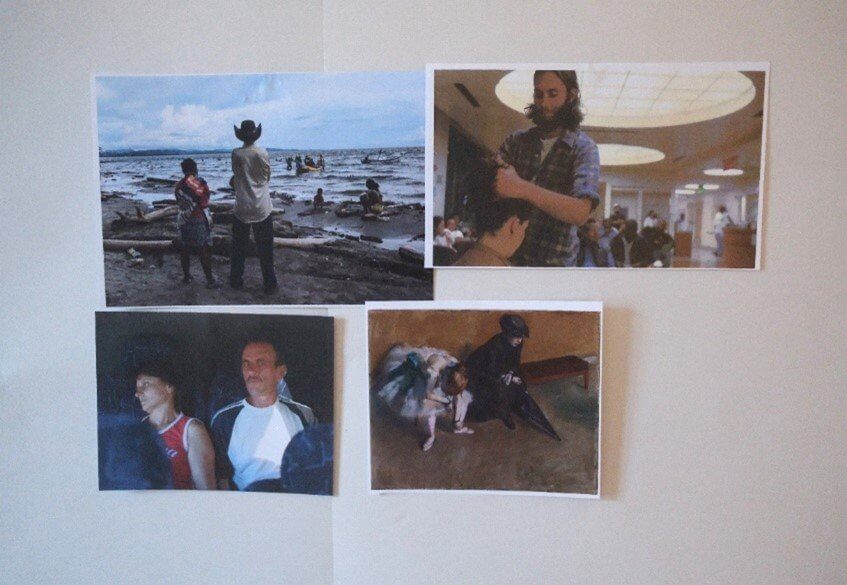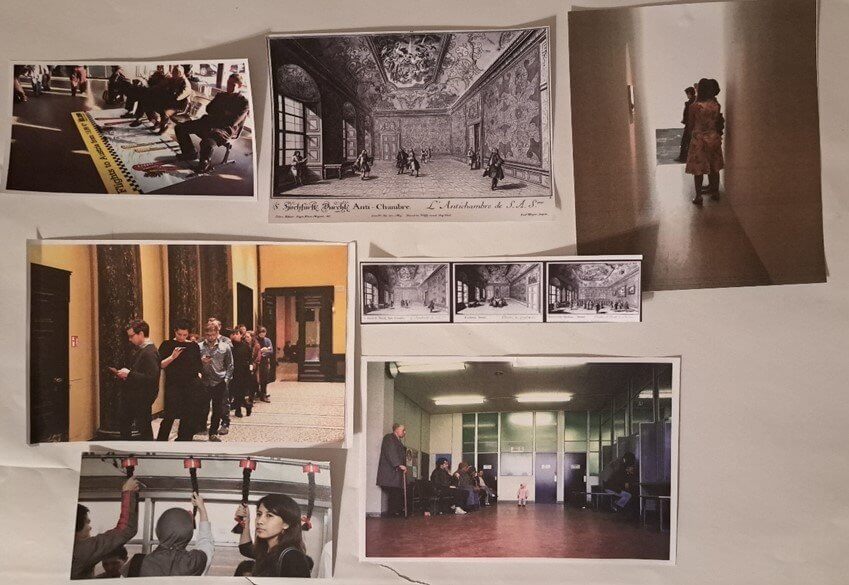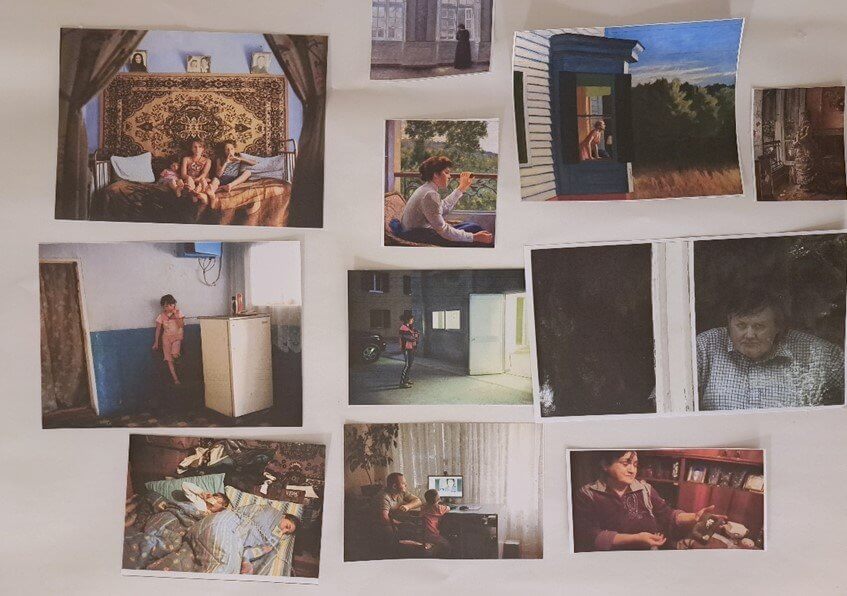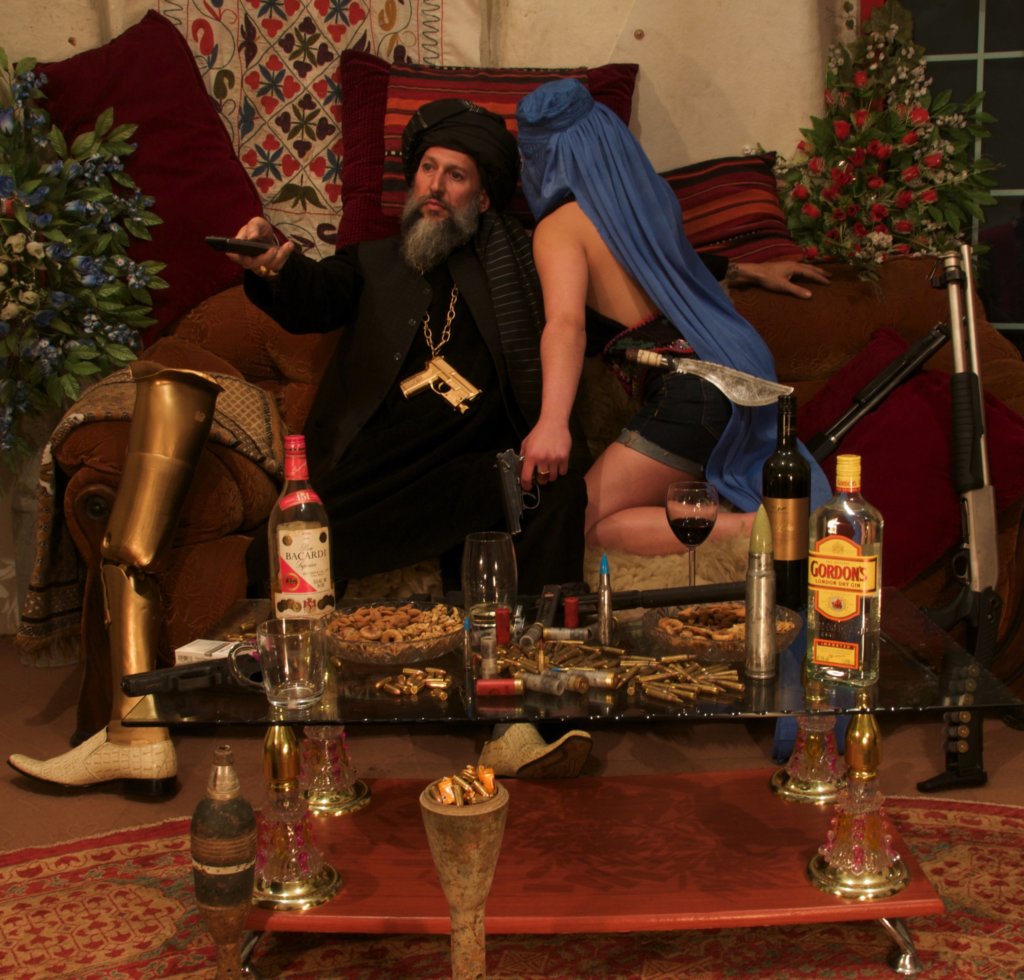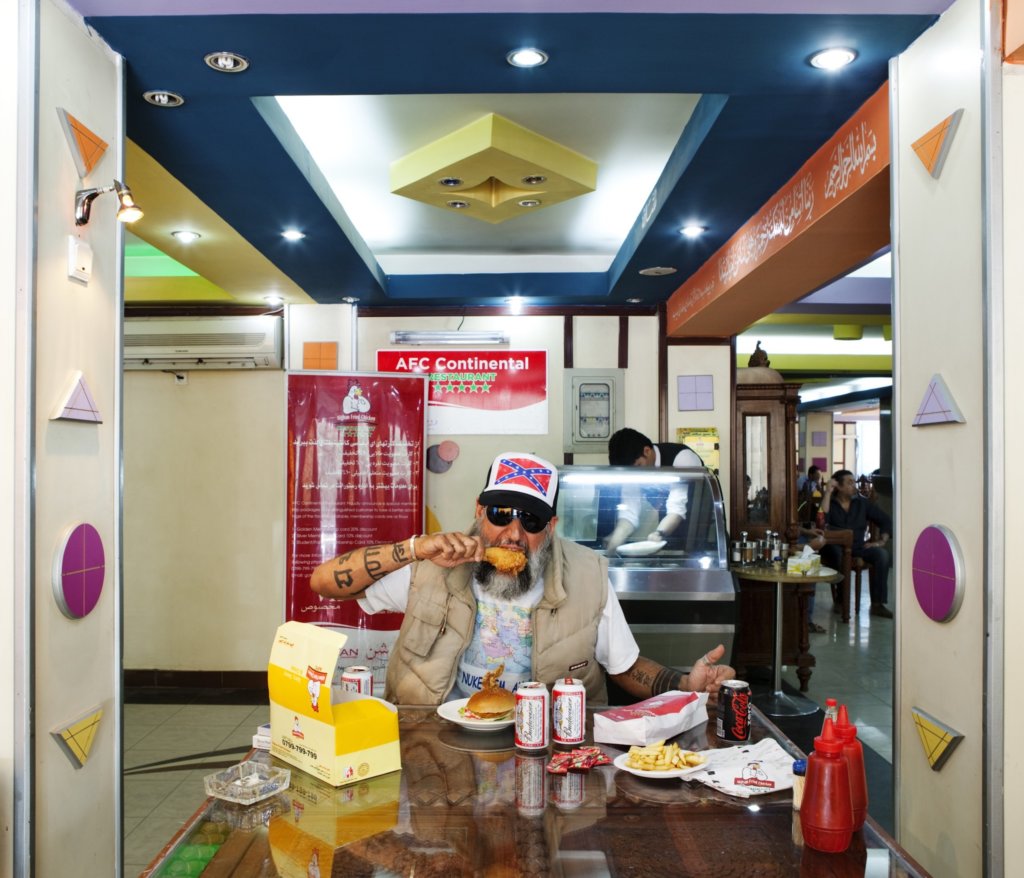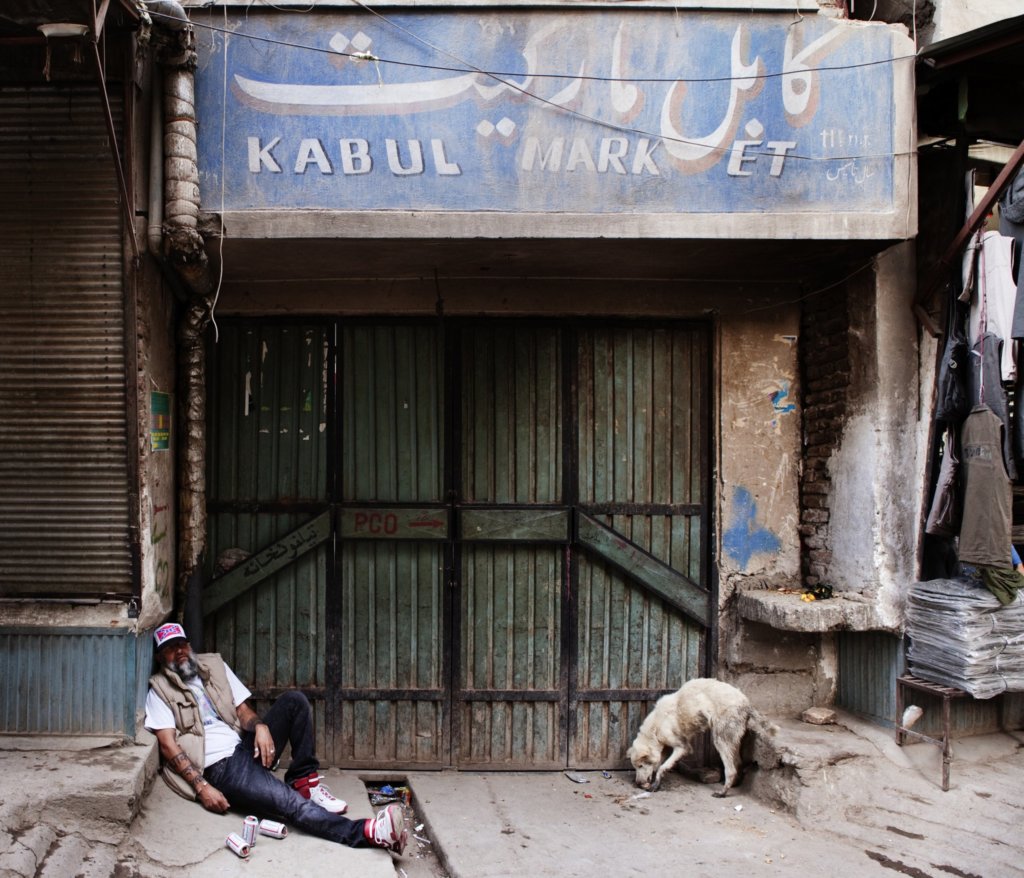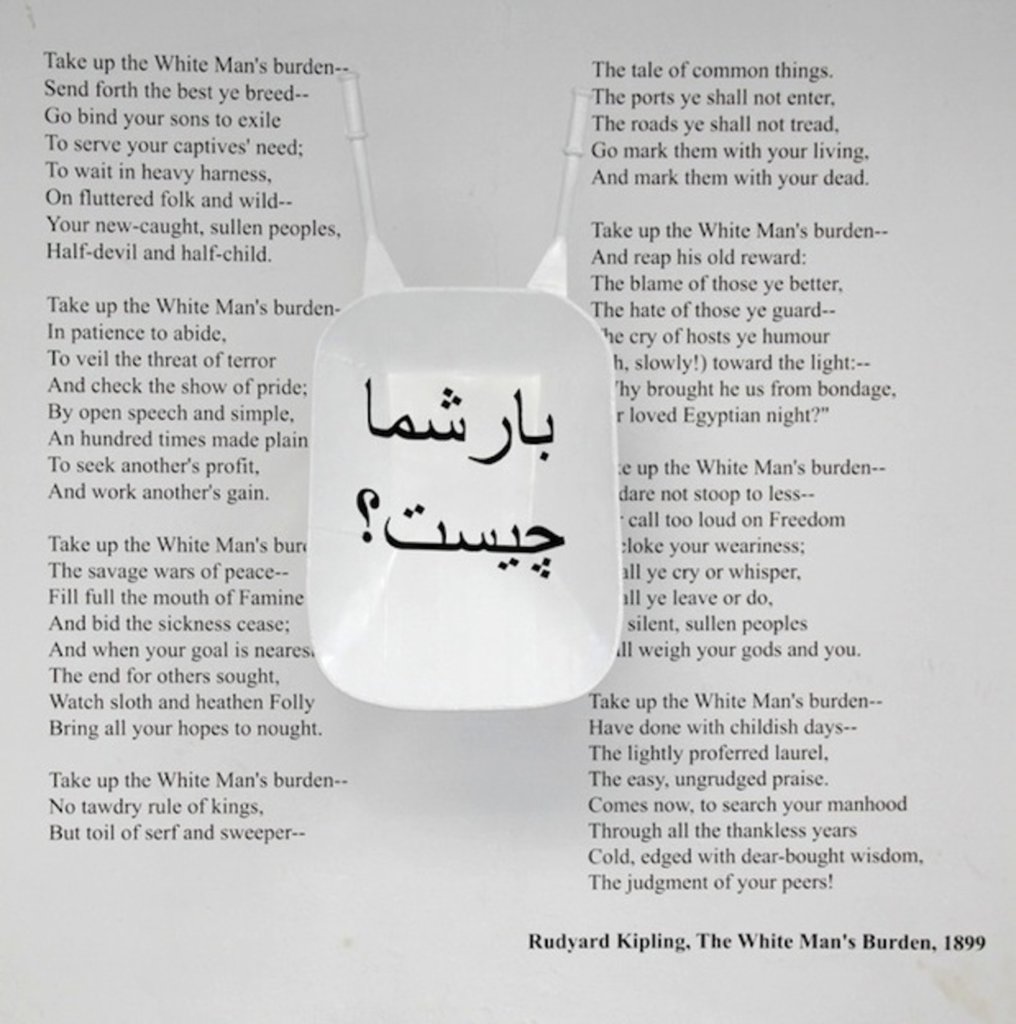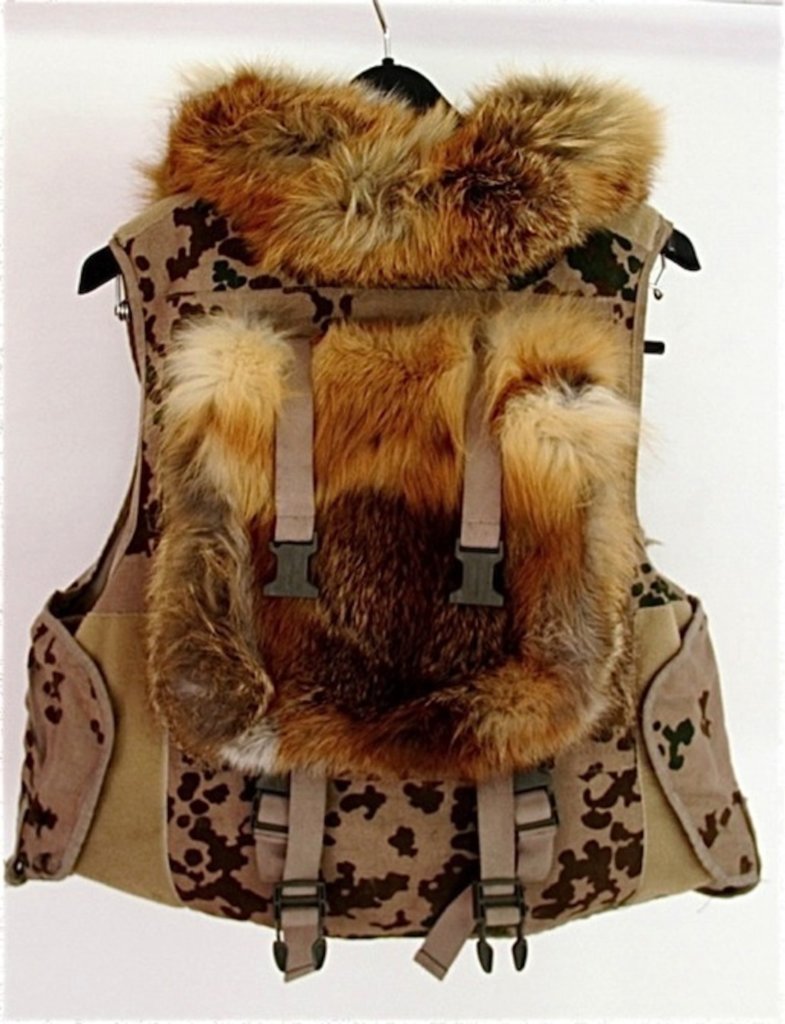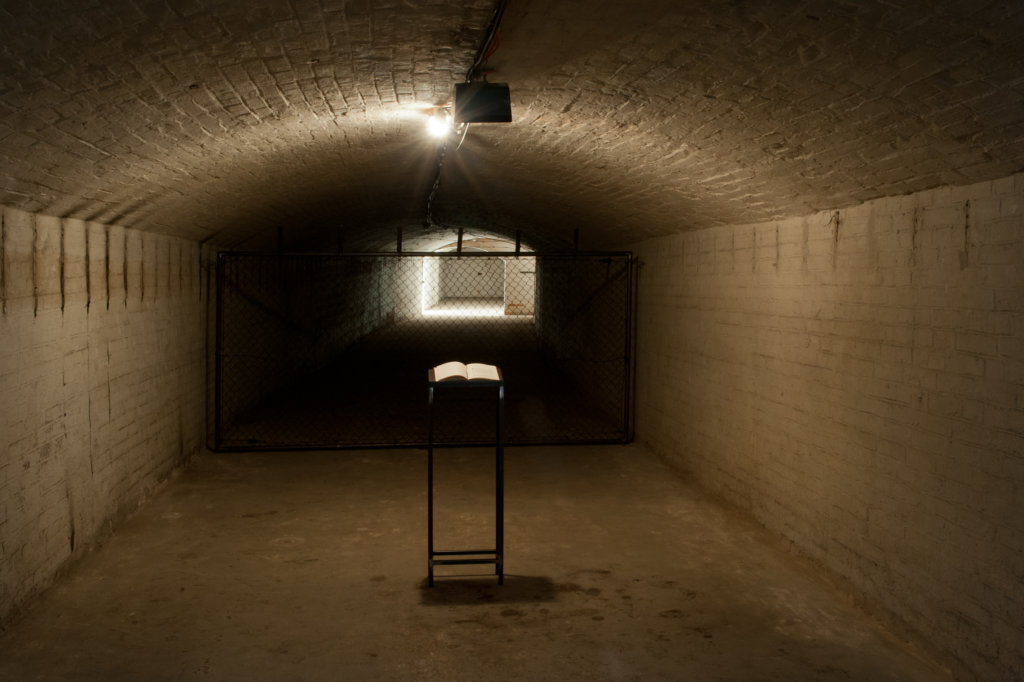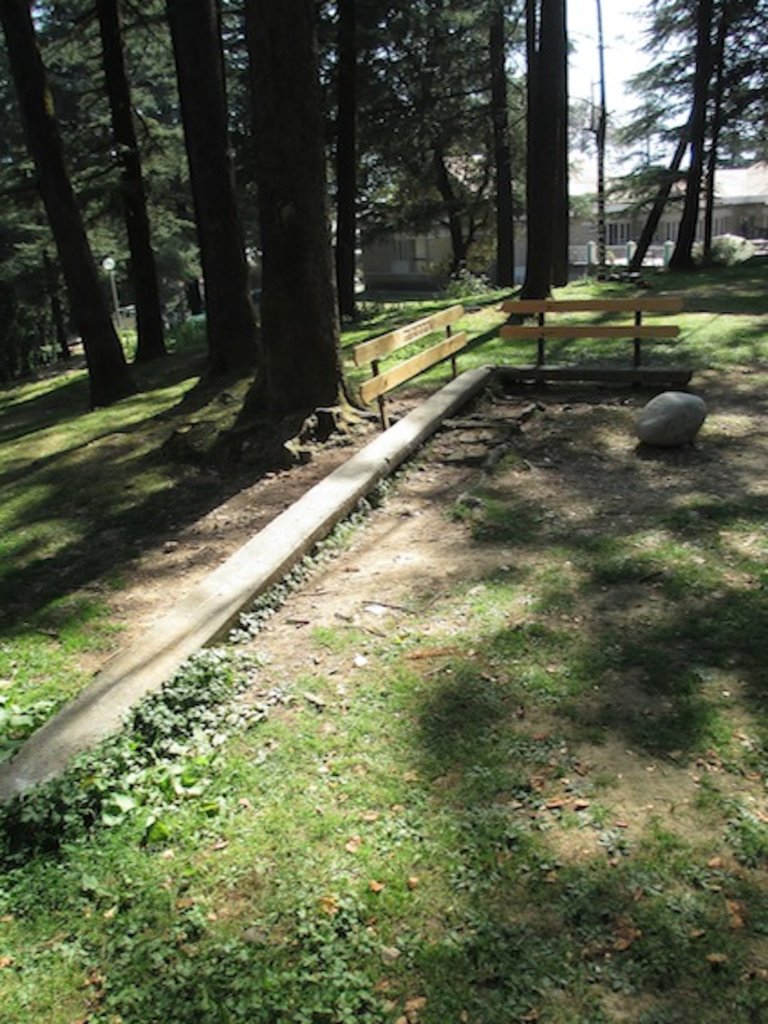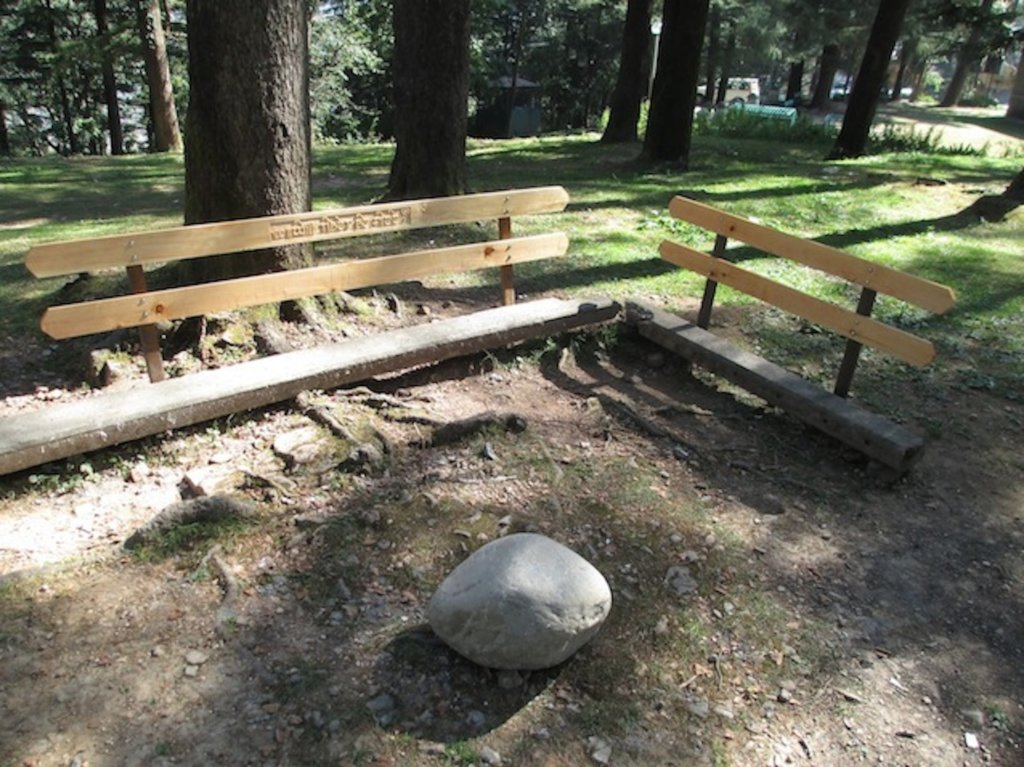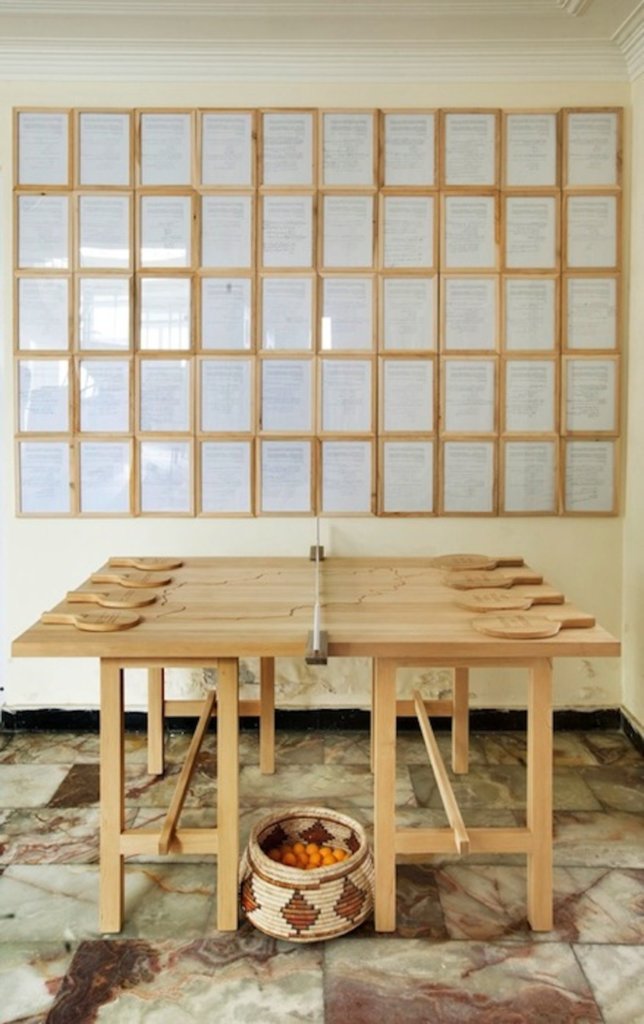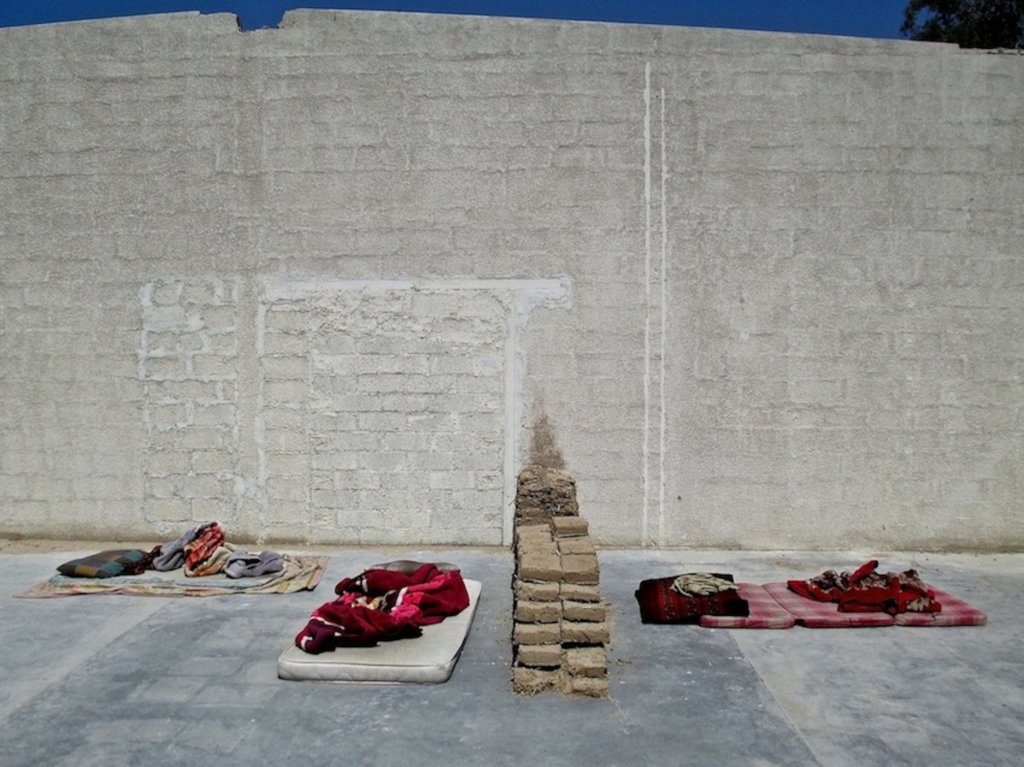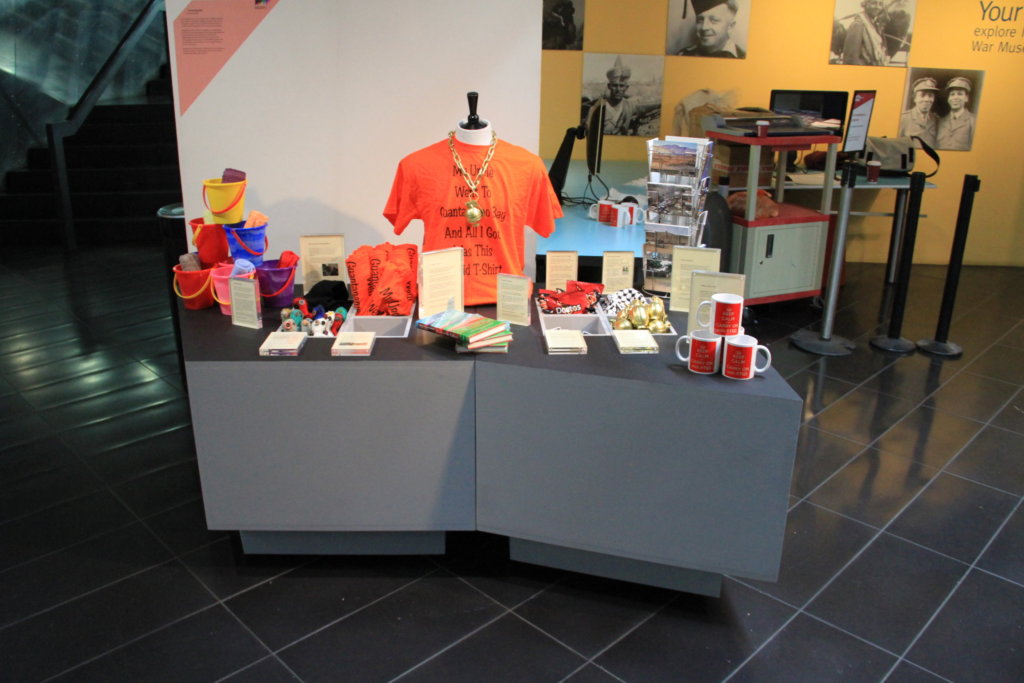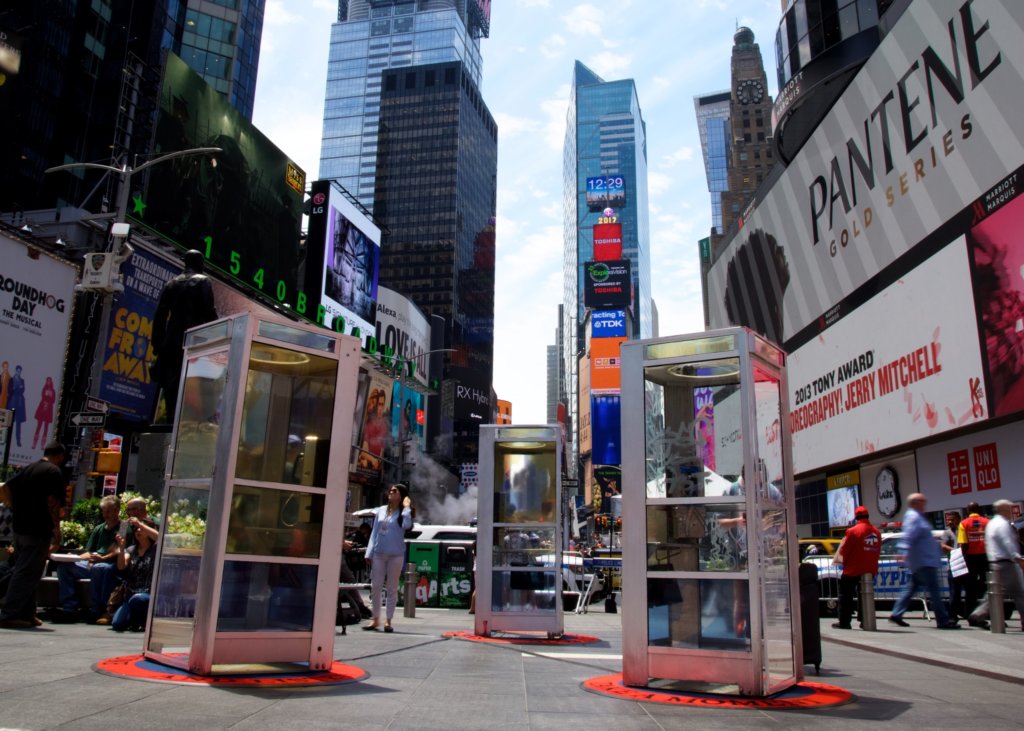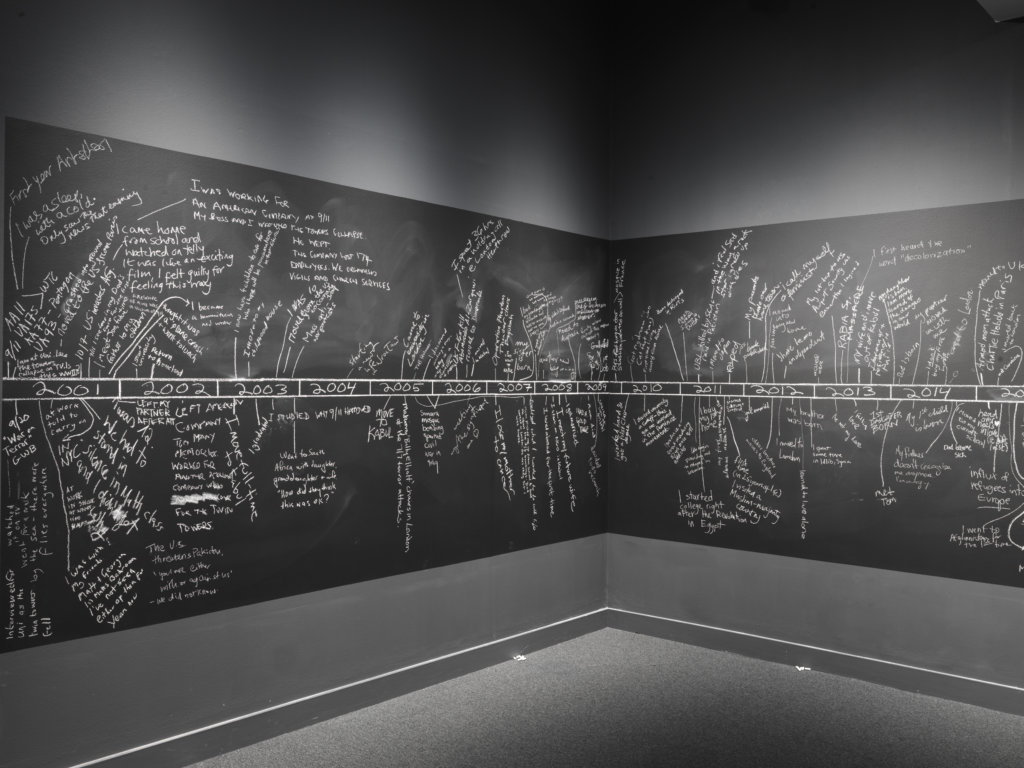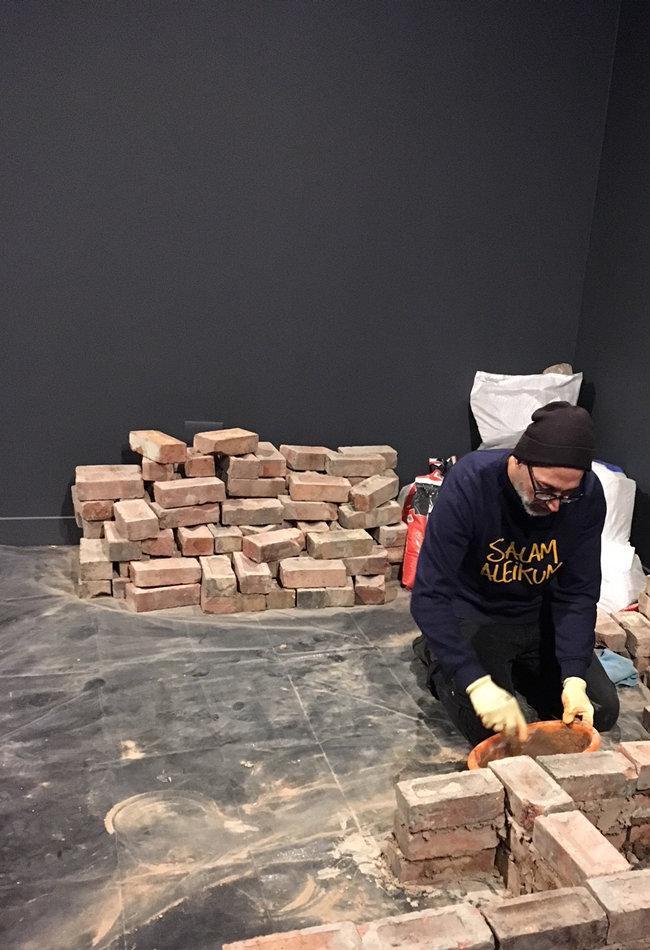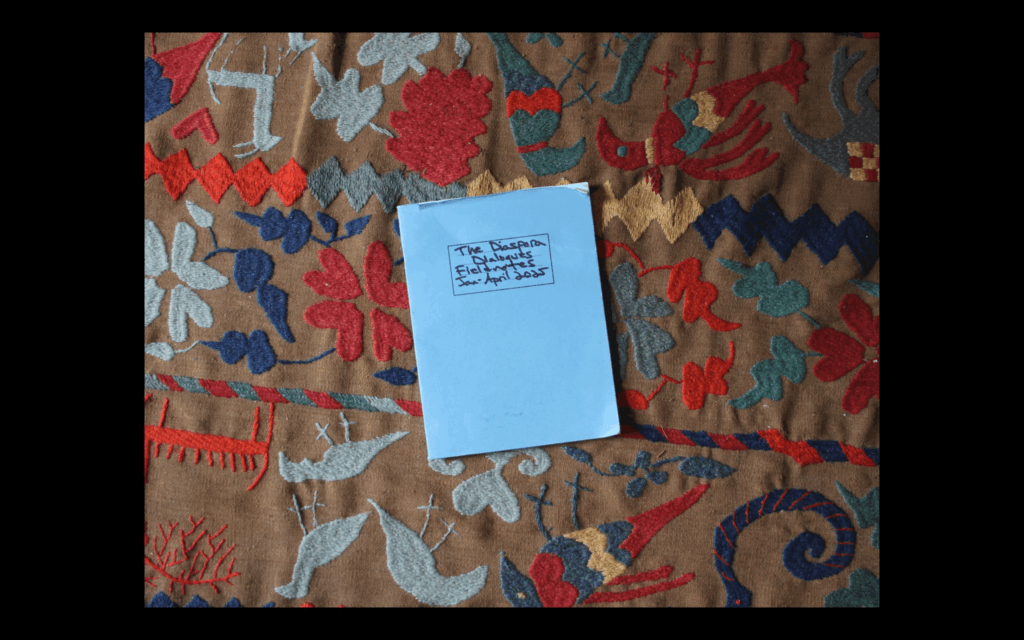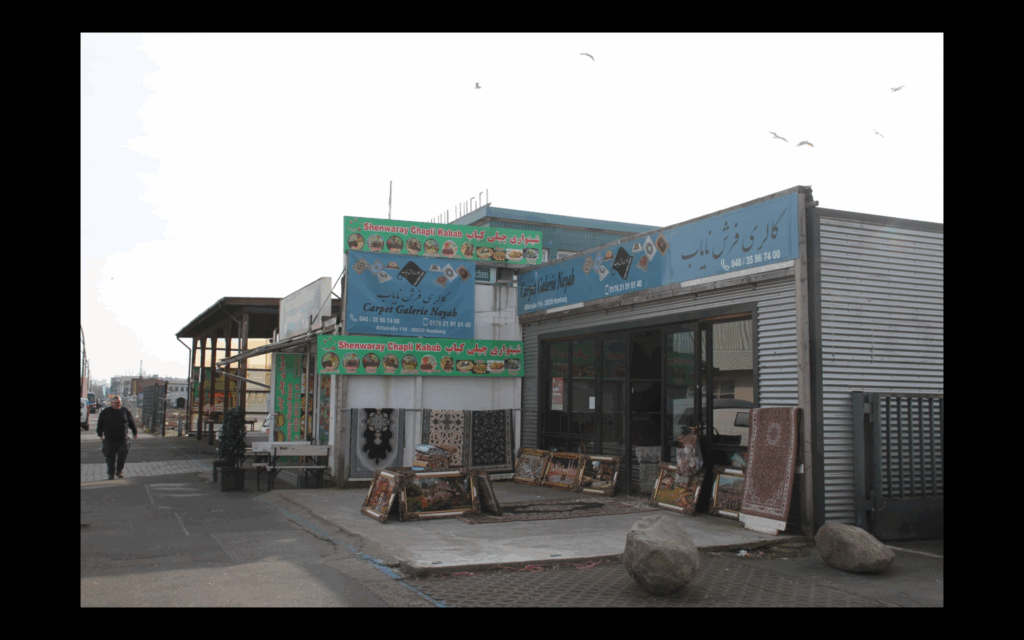Montage, a Craft and Thinking Tool for Political Sociology
https://doi.org/10.71609/iheid-63cc-mt84Image co-presence as a mode of inquiry: drawing on art history and cinema
gMontage, of still or moving images, involves co-presence; grouping images based on various visual associations. The technique embraces plasticity, allowing images to circulate and connections to evolve. A striking example from the 1920s is Aby Warburg’s Mnemosyne Atlas, a work tracing how images from antiquity reappear in later periods, bringing together representations of emotions and gestures as well as aesthetic elements. This approach contrasts with historicist methods, which tend to focus on dating, localizing and contextualizing images. The Atlas-montage method has since been widely adopted by artists and art historians. For example, when presenting his archives, French art historian Georges Didi-Huberman adopted a similar approach, placing Vermeer’s The Lacemaker alongside Sandback’s minimalist works on a montage table to problematize how a red thread or its representation in artworks can evoke strong aesthetic feelings. This “work of anachronism” is not about equating the two works; rather, it seeks to establish connections to reframe the discussion, fostering creative lines of inquiry without forcing a resolution of the existing differences.
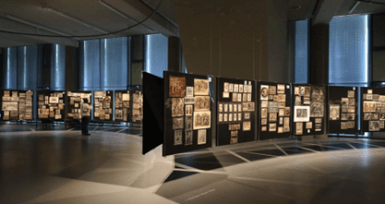 Aby Warburg’s Bilderatlas Mnemosyne, 1866-1929
Aby Warburg’s Bilderatlas Mnemosyne, 1866-1929This approach also finds an echo in the work of filmmaker Jean-Daniel Pollet: “The real montage begins when you don’t know what will happen […] when themes intertwine, clash; that’s when freedom, choice, and suspense intervene in the gap, the splice, the transition from one shot to the next.” In cinema, montage can entail a logical sequence that propels the narrative forward: the character opens the door, and then she finds herself in a bar. Yet, other, non-linear forms exist, such as tonal montage or intellectual montage. The former focuses on the shared visual or auditory elements between different shots, aiming to capture the overall tone of a scene. For example, the two protagonists of In the Mood for Love are shown on the street and in their office to insist on physical distance but atmospheric closeness (video excerpt). Intellectual montage, on the other hand, involves placing seemingly unrelated images side by side to provoke new ideas or insights into a concept. The opening scene of 2001: A Space Odyssey’s cuts from an ape throwing a bone to a satellite in orbit, conveying a sense of rapid evolution (video excerpt). Here, montage is not a logical succession of actions, but a form of double exposure. As viewers, we find ourselves in a dialectical logic: two shots brought together generate an idea, an emotion not found in the individual shots themselves. The growing interest in image co-presence has even prompted some filmmakers, such as Abel Gance and Harun Farocki, to move the montage operation out of the editing room and to project across several screens at once.
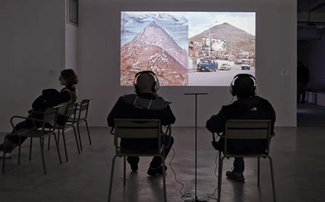 Harun Farocki, L’argent et la croix, 2010
Harun Farocki, L’argent et la croix, 2010Although my doctoral research includes elements of audio-visual creation, my engagement with montage began before I decided to produce my own images. From the early stages of my research on humanitarian landscapes of waiting, I collected images from diverse genres and sources, forming an atlas or iconothèque: images of Armenian bus shelters, photos of queues from the archives of humanitarian organizations, engravings of waiting rooms from early modern Europe, contemporary photographs…
To illustrate this approach, three primary lines of inquiry emerged from my early image (re-)assembly.
Facing the matter: rebalancing deep reading and close visual description
Montage presents a way to train our eyes and rebalance “deep” reading (the exploration of power structures and discourse as part of image creation and curation) and “close” reading (the descriptive and contextual observation of phenomena at work). Within political sociology, authors such as Love, Austin and Bramsen have warned that the field’s increasing concentration on deep readings of the politics of the visual frequently occurs at the expense of a close reading of visual artefacts, missing their intricate details, complexities and tensions. Relying too heavily on deep readings risks losing the capacity to remain attentive to the very content of the visual artefacts under scrutiny.
At the same time, arranging images is a crafting process, both manual and thoughtful. The materiality of the exercise is significant. In the words of the film editor Claire Atherton: “I always need a moment where I am alone facing the matter. It can be a few hours, a morning, or a few days. It’s like discovering an unknown space.” It is through these back-and-forth movements that we learn to truly observe our images, seeing them less superficially. Through manipulation, we develop a certain familiarity – as well as affective connections – with our images.
As part of my research on migrants’ return through the Darién and the waiting dynamics linked to it, I have worked on two audio-visual pieces: an observational film Boats to Come, and a photo series Stolen Time that mobilizes migrants’ re-enactment of their waiting through masks. In both cases, montage allowed me to notice the recurrence of certain gestures and practices associated with specific objects. Moreover, manipulating the images during the editing phase activates memory in a different way than field notes do; seeing a facial expression or hearing a background noise again immerses one differently in the sensory realm. Yet, this process is not necessarily a solitary one. In the case of the film Boats to Come, although I created the first version of the edit, the joy and interest of the process later came from refining the montage together with Alberto Gonzalez Morales, sitting side by side in front of the sequence of images and discussing the choices.
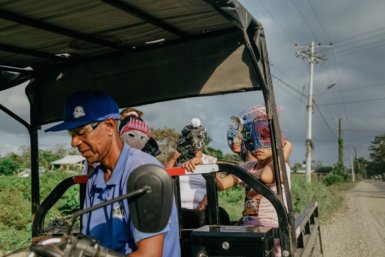 Stolen Time photo series, 2025.
Stolen Time photo series, 2025.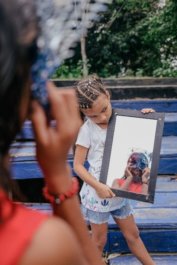 Stolen Time photo series, 2025
Stolen Time photo series, 2025My research was conducted in a region outside of state control, which required greater attention to what could and could not be filmed or photographed. Editing footage from both audio-visual projects in parallel allowed for a more conscious observation, not only of the spaces that could be filmed, but also of the differences in access between the two projects. In Stolen Time, the use of coloured masks introduced an artistic, perhaps more playful or naïve dimension – or, at least, perceived as such. In this specific context, this somehow opened more access than a pure documentary approach.
If montage allows for “close observation”, this kind of observation includes a sensitivity to the rhythms of the landscape. In metric montage, the duration of shots follows a precise measure to generate rhythm: the internal content of each frame is subordinated to its duration, with shots arranged in fixed proportions (for example, if each shot lasts 4 seconds). In contrast, rhythmic montage is determined by the internal movement or temporal flow within each frame (respecting the length of a discussion for instance). In Boats to Come, the rushed shots themselves suggest a rhythm: some clips are too short, the camera moves abruptly or orients to the ground at the end of the shot. The montage draws our attention to these imperfections: we want to fix them or remove them because they interrupt the aesthetic flow. However, they also tell us something important about the limitations of non-fiction film, limitations that can be part of the social phenomena we study.
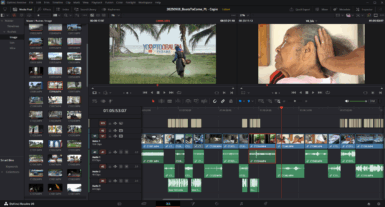 Screenshot, editing Boats to Come, 2025
Screenshot, editing Boats to Come, 2025Conclusion
To conclude, there is a profound need for reflexivity about our position as “researcher-editors”. This involves a reflection about our method of selecting images, potentially also documenting the selection processes: Why are certain images attractive or more relevant to us? Are they aesthetically or emotionally evocative? Do they trigger visceral responses? Montage is not just a method; it is also a performance. With a technique like Atlas-montage, one might even ask if there is a narcissistic dimension to the exercise. The images we select and the ensuing juxtapositions highlight our taste and our skill at finding “rare gems” and interesting connections. At the same time, our montages expose us as researchers. If our initial selection of images is somehow open to all winds rather than based on a rigorous historical or geographical selection, do we also flirt with a sort of collector’s whim? Our selections say something interesting about our desires and affinities, enabling us to question what touches us in a theme, an inquiry. This questioning also invites us to recursively wonder what images are left behind, never selected to make their way to our montage tables.
Electronic reference
Elamajidi, Nora Doukkali. “Montage, a Craft and Thinking Tool for Political Sociology.” Global Challenges, Special Issue no. 3, October 2025. URL: https://globalchallenges.ch/issue/special_3/montage-a-craft-and-thinking-tool-for-political-sociology. DOI: https://doi.org/10.71609/iheid-63cc-mt84.This bilingual special issue of Global Challenges has been jointly produced by the Geneva Graduate Institute’s Research Office and the Centre for International Studies (CERI – Sciences Po – CNRS). Coordination was provided by Miriam Périer for CERI and Marc Galvin for the Geneva Graduate Institute.
VIDEO: Alexandra Grimal (2020)
Domaine de Chambord
An inauspicious day from the get-go
My poetry has always been influenced by other artistic media, including contemporary dance, music, and audiovisuals. ‘An inauspicious day from the get-go’ is a poem with direct roots in cinema. It is affected by the simple, striking, abrupt, and contradictory visual elements in the films of two avant-garde Palestinian directors: Hany Abu-Assad’s Rana’s Wedding and Elia Suleiman’s Divine Intervention and The Time that Remains. Similar to these films, the poem explores the indifferent, banal, and haphazard genocidal violence inflicted by, and inherent in, settler colonialism; so that regular, daily acts of the colonized, like talking on a phone, or looking out a window, become extremely dangerous actions.
Through the ‘colonial encounter,’ such simple acts transform into areas within which the colonized struggle to maintain their continuity, existence, and life, as contrasted with the colonizer’s core endeavor[s] of disruption, annihilation, death. This poem touches on these contrasts of ordinary, day-to-day living, examining how colonialism obliterates them to a point of no return.
An inauspicious day from the get-go
Some damn thing made her mom start talking to her about her fiancé yet again. “He’s just not cast from the same clay we are,” she said, “and I don’t think he’s really got it in him to make it a home.”
And as always happens at such times, the young woman shouted and swore, then she hurtled—like a metal water tank hoisted half-way up towards the roof slipping its trusses to crash back down—out of the house.
In the moment between her opening the front door and slamming it behind her, a tank passed; the sound of its tracks the crushing of little children’s bones, the smell of its exhaust charred corpses.
As she crossed over to the opposite sidewalk a sniper behind her shot a young man at the end of the street, of whom nothing had appeared in the machine gun’s sights except the hair on the back of his head.
Before she raised her hand to her friend’s doorbell a bulldozer had extended its metal claw towards the walls of the next-door building, so that it crumbled into pieces on the ground.
Under the rubble a doll with disheveled hair and dusty clothes was playing some music out of her belly, next to her a notebook in which the boy had drawn what he imagined of a bulldozer destroying a house that he imagined as his own.
The boy sits silent while the woman at his side (his mother) hits herself on the head, his father having preceded him to prison. The boy will grow up one day and will love a girl who has grown up also, and then he will be betrothed to her.
The boy who got engaged to the girl—after they grew up, and he got out of prison—had been saying goodbye to her at the end of the street, and stayed there watching her walk away until she entered her house. Then he slowly walked along the street from one end to the other, passing in front of the sniper, who eventually took the decision to put a bullet in the back of the boy’s head, after the tank had gone down the street, and he’d heard the sound of a door slamming and a girl had dashed by from one sidewalk to the other, all of which he took to be evil omens, and were.
Copyright © 2025 by Hisham Bustani. Originally published in A Poem-a-Day on January 27, 2025, by the Academy of American Poets.
Translated from the Arabic by Alice Guthrie.
VIDEO: Medical placement in the Solomon Islands
Bond University
Presentation of Destiny/Destination and reading of selected poems by Darius Kethari
Geneva Graduate Institute
VIDEO The Monkey in the abstract garden, Alexandra Grimal
Montage 1: Waiting with, differentiated temporalities in shared waiting
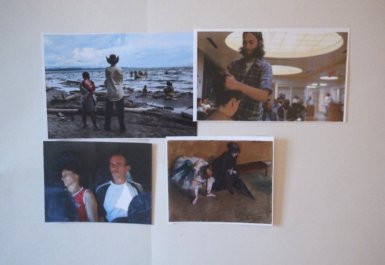
It is unsurprising that waiting has a collective aspect, fostering interaction and potential solidarity. Yet, juxtaposing images like this film still from Peter Nicks’ The Waiting Room (a woman awaiting a consultation alongside her partner) and Edgar Degas’ painting L’Attente (a young dancer accompanied by a possible chaperone) raises questions about differentiated temporalities in shared waiting. How does the presence of accompanying individuals who share the waiting experience, even though they are not directly waiting for anything, alter the dynamic of waiting?
Nora Doukkali Elamajidi
Artistic collaborations with Carlo Vidoni (Destiny/Destination) and Loris Agosto (Homo Itinerans)
It was almost by chance that I began collaborating with two artists I knew from before. I first worked with Carlo Vidoni to design an exhibition entitled Destiny/Destination, which resulted in a polyphonic book bringing together interviews with migrants and poetic evocations, drawings and photographs (Monsutti & Vidoni 2023). The words we collected uncovered the vacuity of certain predefined categories: for example, the labels “economic migrants,” “asylum seekers” and “refugees” flatten a much more complex and diverse landscape. Our interlocutors spoke of their migration trajectory in terms of a tension between attachment to the places where they grew up and curiosity about the world that exists beyond the walls of their homes. These polymorphous conversations were translated into an open language that crossed the boundaries between social anthropology and visual art, between creators and the public, to reach people who could relate to the migration narratives and enrich them with their own experience. The lines on the palm of the hand were our visual and discursive starting point. They tell stories, they convey a message of singularity and, at the same time, of shared humanity, of idiosyncrasy and universality.
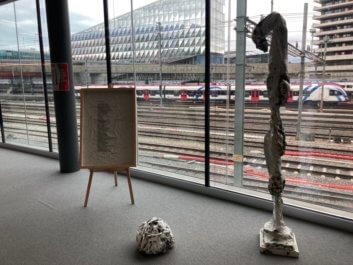 I Am From Where I Am Going, Geneva, March 2024 (A. Monsutti).
I Am From Where I Am Going, Geneva, March 2024 (A. Monsutti).Another artist, Loris Agosto, was struck by a sentence that an old man told me during my fieldwork in the mountains of central Afghanistan. I used this sentence to open the book Homo Itinerans (Monsutti 2020): “I come from where I am going!” An apparently paradoxical sentence, it is more than just a formula, it is an invitation to change our perspective and take a fresh look at human mobility. Here, social sciences inspired art through the production of sculptures in which human faces can be distinguished, without it being clear whether they are being born or being swallowed up by mud. The work was complemented by figurative texts I wrote to evoke migrants’ conditions of living and itinerancy as a way of being in the world (see more).
Alessandro Monsutti
The Garden of the (In)visible
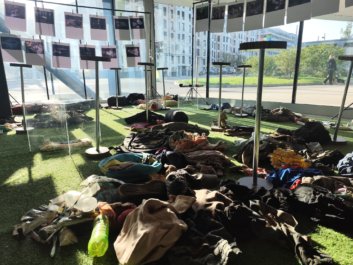 The Garden of the (In)visible, Geneva, November 2024. © Alessandro Monsutti
The Garden of the (In)visible, Geneva, November 2024. © Alessandro MonsuttiIn line with Danto’s and Latour’s invitation to see art as a way of being and acting in the world, the installation The Garden of the (In)visible, co-created with my colleagues Roberta Altin, Giuseppe Grimaldi and Katja Hrobat Virloget, staged artefacts collected along the so-called Balkan Route, at the borders between Croatia, Slovenia and Italy. Here, objects are clearly social agents: they render visible people who were largely invisibilised. The installation was presented in public spaces and even on the streets, drawing attention to a socially sensitive situation, intentionally inviting polemic among people who might disagree in a way that participants in an academic conference would not. The process was participatory at each of its various stages: First, collecting the artefacts involved local authorities and activists, students and professors from the various universities of the region. Then, the installation was accompanied by events that brought together migrants who had taken the Balkan Route, people living near the various borders, and all those who joined the collect.
In this project, the differences between social sciences and art, but also between investigator and investigated, between curator and visitor, fade. It was not about communicating the work of social scientists to a broader audience but rather creating – beyond the narrow circle of university professors and students – a new epistemic and political community. We were modestly following Latour’s footsteps, making public debate more accessible and challenging taken-for-granted assumptions, but, more importantly, we hoped above all to open up new possibilities for action and coexistence.
Alessandro Monsutti
Hannah Entwisle Chapuisat’s current research explores how art…
My current research explores how art’s critical capacity to engage affect, the senses, and the imaginary might influence international norm evolution in intergovernmental venues, drawing on constructivist scholars Martha Finnemore and Kathryn Sikkink’s 1998 norm “life cycle” model that recognizes the role of “[a]ffect, empathy, and principled or moral beliefs” in international norm dynamics. I have found that when art is integrated within collective efforts to develop norms, it can increase global policymakers’ awareness and understanding, inspire ideational commitment, and generate creative thinking, which can all influence norm evolution processes. For example, in the context of a programme such as the UN80 Initiative – an initiative launched in March 2025 to make the United Nations more effective – art-based projects may stimulate more expansive and innovative reflection about the future of multilateralism. Rather than restricting the debate to what is financially and politically viable, art has the capacity to propose or test radical solutions that may embolden global policymakers to think bigger and perhaps arrive at more innovative visions.
Screening of Mati Diop’s 2024 film Dahomey at the CDHM (February 2025)
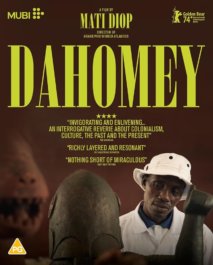
In February 2025, the CDHM hosted a screening of Mati Diop’s 2024 film Dahomey, a documentary following 26 objects from the former Kingdom of Dahomey as they leave Paris and are returned to present-day Benin. The screening was followed by a panel discussion on the “Diplomacy of Restitution: Issues of Knowledge and Powers”. Participants included leading academics, diplomats, curators and writers active in both Benin and Europe. Co-chaired by Doreen Mende, Director of Research of the State Art Collections in Dresden and Prof. Mallard, the discussion explored issues around how stolen art treasures can be received in a country which has reinvented itself in their absence. The panel covered themes ranging from the making of the film and panellists’ personal experiences of restituting archives to methods of postcolonial digitisation and digital archiving. Leading up to the event was a seminar for students at HEAD – Genève on collaborative projects on provenance research between African and Western researchers. A special session, “Within me resonates infinity”, based on the film, was held at the Museum of Ethnography Geneva (MEG) for students of HEAD – Genève and IHEID. Through the organization such multi-facetted events with a diversity of actors from different backgrounds, the CDHM hopes to break disciplinary and institutional boundaries, placing the Institute at the forefront of pedagogy on multilateralism.
Grégoire Mallard
“Image wars”, a forthcoming project by Nataliya Tchermalykh
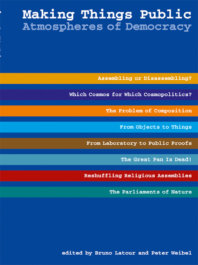
The first exhibition organized by Bruno Latour and Peter Weibel in 2002, Iconoclash, examined the: the various attempts to destroy, prohibit or indeed protect religious as well as scientific and artistic images of God, nature and man. This theme of image wars will be further developed by Nataliya Tchermalykh, a CDHM affiliate researcher in a forthcoming project. The second exhibition produced by Latour and Weibel, Making Things Public, addressed what the organisers called the “atmospheres of democracy”, pairing an impressive range of philosophers, historians and sociologists, from Europe and the United States, with visual artists. Their task: to explore the variety of media via which citizens in modern democracies voice their political claims.
Gregoire Mallard
PODCAST: Makenzy Orcel. Le sensible, la raison et la compréhension du monde
Research Office – Geneva Graduate Institute
VIDEO Member State, UN and public engagement with artwork during negotiations
Youtube / VonWong
More on my ethnography of the Tubas Cluster Plan, by Dorota Kozaczuk
My ethnographic study of the Tubas Cluster Plan dates back to 2016, when the Palestinian consultancy CEP (Center for Engineering and Planning) began developing a regional master plan for the Tubas Governorate in the northern Jordan Valley. The project covered 118,297 square kilometres, including lands within the 1940 village boundaries of Tayasir and Bardala, as well as northern sections of Area C within Tubas city limits. Nine Palestinian communities were included in the planning framework: Al Malih, Ein al Hilwa, ‘Aqqaba, Tayasir, Khirbet Tell el Himma, Ibziq, Kardala, ‘Ein el Beida, and Bardala.
At the outset, the CEP team compiled available GIS maps, updated aerial photographs, and gathered archival data from Palestinian ministries and municipal authorities. They collaborated with a Belgian NGO and UN-Habitat as part of the project “Fostering Tenure Security and Resilience of Palestinian Communities through Spatial-Economic Planning Interventions in Area C (2017–2020).” Consultations were held with village mayors and governorate representatives, following participatory planning protocols developed by GIZ and the Palestinian Ministry of Local Government.
By 2019, during my participant observation in CEP’s Ramallah offices, four planning options had been prepared. I was shown the preferred version and invited to meetings where it was presented to stakeholders.
Aesthetic Vision and Political Friction
The Tubas Cluster Plan was visually compelling. On a printed A1 sheet, the region was divided into three zones: a deep green western section for agriculture, a faint brown central zone for mountainous terrain, and a dull green eastern area for pastoral land. Seven small zones, marked in vivid orange and bordered in blue, represented planned communities in the north, west, and east. CEP staff noted that the Israeli Civil Administration had approved plans for Tayasir, ‘Ein el Beida, and Bardala, while previously rejected plans for Al ‘Aqaba, Al Malih, Al Farisyia, and Karbala had been redesigned.
The plan proposed a road encircling the mountain range, connecting the seven communities, and included upgrades to existing roads in the west and south. Notably, it omitted Israeli settlements, the separation wall, and the military designation of much of the area. In this orthographic vision, the region functioned holistically for Palestinian life, with orchards and livestock populating the mountains and tourist routes inviting exploration. The Tubas Cluster Plan was both a misrecognition of occupation and an assertion of Palestinian reality—true to its survey methods, logically deterministic, and far from naïve.
Between Aspiration and Constraint
Shortly after my study, CEP submitted a report with four proposals to UN-Habitat, the Ministry of Local Government, and the Tubas Regional Committee. I attended the unveiling at the Palestinian Ministry of the Wall and Settlements. The meeting aimed to align institutional goals, but quickly revealed tensions. Ministers and engineers spoke of life near the Occupation Wall and recounted stories of displacement. One minister criticized the plan as disconnected from lived realities and questioned its aesthetics. A planner, however, defended the right to imagine beyond oppressive facts, arguing that the Tubas visualisation offered a glimpse of what that could look like.
The meeting ended without consensus. Ministerial support for a plan covering large swaths of Area C carried serious political implications: it risked undermining the Oslo Accords and provoking backlash from Israel and the international community. The plan’s aesthetic of misrecognition also conflicted with the prestige of “surveyed oppression,” which underpins legal and humanitarian support for Area C. In reality, Tubas remained a zone of daily survival under Israeli fire.
Weeks later, the CEP team presented the plan to the nine communities. At the Tubas Municipal Offices, the idea of a prosperous region was met with quiet resignation. It was deemed unachievable and received little attention.
By the end of the following month, CEP submitted individual village plans to the Israeli Civil Administration, aiming to expand them beyond Area B. These plans conformed to the aesthetics mandated by the ICA—complete with its loathed colour scheme and the infamous blue polygon.
By autumn 2019, CEP confirmed that the Tubas Cluster Plan had not been approved.
Montage 2: Spatialization of hope and frustration in public waiting spaces
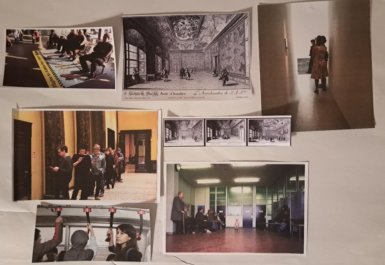
When positioned in proximity to one another, images of public waiting spaces prompt reflection on how their architecture contributes to the experience of waiting. Several scholars have explored waiting as a tool of power. In this context, montages can help foster a closer engagement with how the materiality of spaces and objects configures waiting, embeds power relations and makes waiting individuals aware of their position relative to spaces whose thresholds they have crossed
Montage 3: Domestic waiting, gender and digital mediations
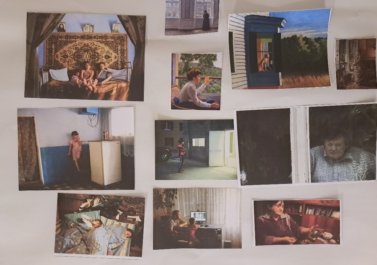
The third montage questions gendered narratives of waiting and domesticity. Some images depict women as passive figures, gazing through windows that symbolize thresholds between interiors as sites of non-events and external action. When these are arranged together with Andrea Diefenbach’s photos from the series Country Without Parents, showing Moldovan children waiting by phones or computers for news from their parents who work in Italy, they offer new avenues for reflection.
History of Palestinian Planning with maps and images
The Military Orders
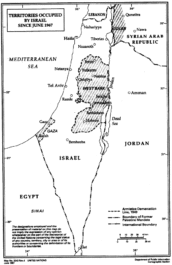 Map No. 3243 Rev 4, Territories Occupied by Israel Since June 1967, United Nations, June 1997
Map No. 3243 Rev 4, Territories Occupied by Israel Since June 1967, United Nations, June 1997
On 1 June 1967, the Israeli military issued its first Military Order, declaring the Gaza Strip and the West Bank as closed military areas. Military Order No. 2 imposed martial law on the West Bank and transferred all legislative, executive, and administrative powers of the Jordanian government to successive Israeli military commanders. Under strict adherence to the Fourth Hague Convention, existing laws could not be altered.
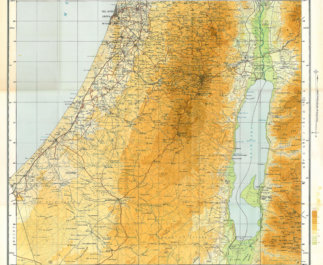 Survey of Palestine 1944, 1:250,000 Sheet 2 (partial crop).
Survey of Palestine 1944, 1:250,000 Sheet 2 (partial crop).Survey of Palestine 1944, 1:250,000 Sheet 2 (partial crop).[/caption]As the occupying power, Israel inherited maps, plans, land laws, and regulations from the Ottoman, Jordanian, Egyptian, and British Mandate periods, spanning over 150 years. Israel immediately began enforcing a stringent military regulatory regime that referenced—but never overruled—existing legal frameworks. Within the first decade of occupation, two parallel strategies emerged: the adoption of most existing laws through Military Orders (MOs), and the centralization of administrative authority under the Area Commander. Palestinians were swiftly stripped of legal and civil rights previously guaranteed under British and Jordanian administrations.
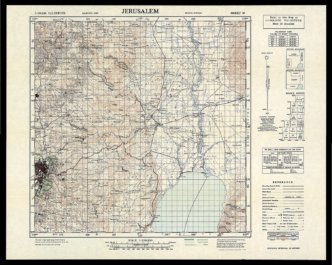 Survey of Palestine 1942–1958, 1:100,000 maps, Survey Department of Palestine Israel enacted Military Order No. 418, titled Order Concerning the [Jordanian] Law for Town, Village, and Building Planning (1966).
Survey of Palestine 1942–1958, 1:100,000 maps, Survey Department of Palestine Israel enacted Military Order No. 418, titled Order Concerning the [Jordanian] Law for Town, Village, and Building Planning (1966).
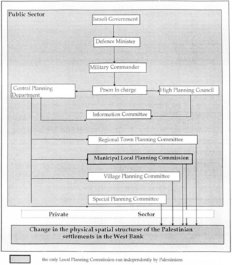 Institutional Arrangements of the Israeli Physical Planning System in the West Bank, Abdel Rahman Abdel Hadi Mahrok (1995, p.126, Fig. 8.2)
Institutional Arrangements of the Israeli Physical Planning System in the West Bank, Abdel Rahman Abdel Hadi Mahrok (1995, p.126, Fig. 8.2)
Through MO 418, Israel effectively excluded Palestinians from planning processes. Over the following decade, Israel issued additional military orders—albeit more slowly—that restricted spatial planning practices to Israeli military personnel only.
Research Office
Me, Amanullah Mojadidi. Who I am…
I received a BA in the late 1990s and an MA in the early 2000s, both in cultural anthropology. I subsequently spent the next 20 years working both as a conceptual artist and a development worker in support of contemporary artistic initiatives in Afghanistan, before returning to academia to pursue a PhD, once again in cultural anthropology. My approach in using anthropology to make art has been to listen to local communities to understand what issues are important to them and then to work with them on defining not only what to represent, but how to represent it. This approach can be seen as falling within what George Marcus has termed “para-ethnographic”, a process in which the ethnographer (or the artist) is “allied with the subject as intellectual partner in coming to terms with the understanding of a shared common object of curiosity” (Holmes and Marcus 2020:29).
Research Office. Geneva Graduate Institute


